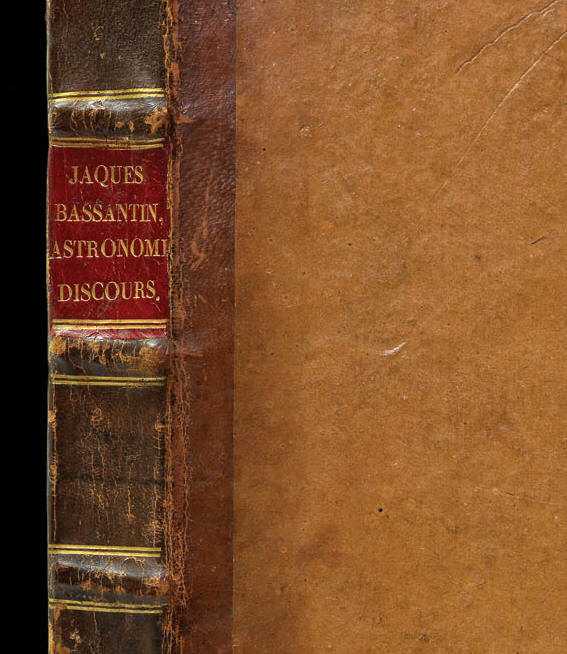
|
James Bassantin |
Astronomique discours. Lyons, 1557 Astronomia J. Bassantini Scoti. Opus absolutissimum, in quo, quidquid unquam peritiores mathematici in caelis observarunt, eo ordine, eaque ; methodo traditur, ut cujus posthace facile innotescant quaecumque de Astris ac planetis, necnon de eorum variis orbibus, motibus, passionibus, etc. dici possunt. Ad Sereniss. principem, D. Fridericum IIII. comitem palatinum ad Rhenum, S. R. Imperii electorem primarium, Bavariae ducem, etc. Ginevra 1599 |
James Bassantin
Astronomique
discours. Lyons: Par Jan de Tournes, 1557.
Astronomia J. Bassantini Scoti. Opus absolutissimum, in quo, quidquid unquam peritiores mathematici in caelis observarunt, eo ordine, eaque ; methodo traditur, ut cujus posthace facile innotescant quaecumque de Astris ac planetis, necnon de eorum variis orbibus, motibus, passionibus, etc. dici possunt. Ad Sereniss. principem, D. Fridericum IIII. comitem palatinum ad Rhenum, S. R. Imperii electorem primarium, Bavariae ducem, etc. Ginevra 1599

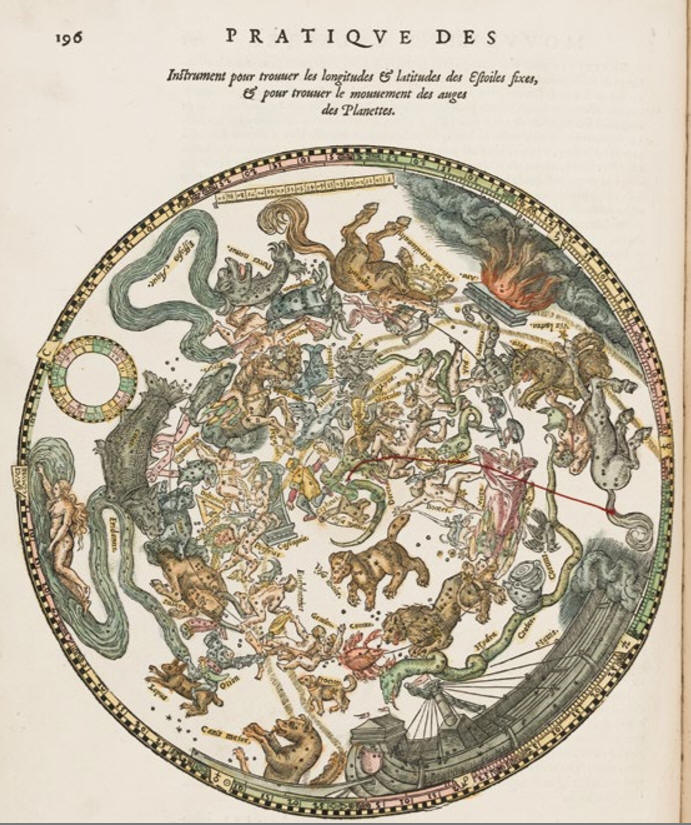
Le due incisioni che presento in questa scheda appartengono a due
edizioni della stessa opera dell’astronomo scozzese James Bassantin: la prima
edita nel
Le copie dell’edizione francese sono rare
ma è possibile trovarle nel mondo dell’antiquariato. Di seguito propongo una
scheda analitica sull’opera e l’autore realizzata
da DB, David Brass Rare Book
che attualmente la propone in vendita,
BASSANTIN,
James. Astronomique discours. Lyons: Par Jan de Tournes, 1557.
Rare first edition of this beautifully illustrated
astronomical work. Large folio (16 7/8 x 11 11/16 inches; 428 x
Early
twentieth-century (ca.1925) French brown hard-grain morocco by René Aussour (stamp-signed
in gilt on the front turn-in). Yapp edges. Covers ruled in blind, smooth spine
decoratively ruled in blind and ruled and lettered in gilt, turn-ins ruled in
blind, all edges gilt, marbled endpapers. With the bookplate of Marcel Destombes,
the famed historian of cartography. Paper repair to lower blank margin of title,
to lower gutter of leaf b2 (pp. 11/12), and to a few other leaves. Overall, a
fine and fresh copy.
Because of the delicacy of the volvelles' construction, moving parts and active
contemporary use, copies in condition with all thirty-six are so scarce as to be
near impossible to find. Of the three copies that have come to auction within
the last thirty-five years only two were complete. Yet one of those had paper
repairs affecting the text. The other, through a lesser auction house, had no
auctioneer's condition report whatsoever, making it suspect.
"Printed paper instruments called volvelles provided astronomers with the
positions of the Sun, Moon, and planets, freeing them from performing lengthy
calculations derived from planetary tables. Bassantin's work, a general overview
of astronomy, partly copies Petrus Apianus's Astronomicum Cæsareum of 1540.
The Irish astronomer William Molyneux (1656-1698) once owned this copy" (Journeys
over Land and Sea : Astronomy and Navigation, Smithsonian Institution).
"The size of this volume and the extent of its illustrations and
ornamentation make this an unusually fine example of the attention given to the
printing of scientific works at this period�This
is the principal work of Bassantin [d. 1568], a Scottish astronomer of
considerable reputation. Settled in France at this period, he wrote in French,
although he had difficulty with the language" (Harvard, French).
"James
Bassantin (b. c. 1504 - d. 1568), astronomer and astrologer, was the son of the
laird of Bassendean in the Merse, Berwickshire, and was born in the reign of
James IV (r. 1488�1513).
He entered the University of Glasgow at an early age, and, after finishing his
studies in the humanities, devoted himself to mathematics and its related
sciences, in which he acquired remarkable proficiency. To improve further in
these subjects he travelled in the Low Countries, Switzerland, France, Italy,
and Germany, before finally settling in France, first in Lyons and later in
Paris, as a teacher of mathematics. His success there may have been because he
was able to introduce new ideas and materials that he had learned in Germany and
Italy exactly at the moment that a lack of modern methods in practical
mathematics was felt in France. His major work, the Astronomique discours, first
published in Lyons in 1557 (Latin trans. Lyons 1559, Geneva 1599), is an
elaborately illustrated book with movable diagrams which describes the basic
elements of astronomy and planetary motion based on the monumental Astronomicum
Caesaream of Peter Apian (1540). Further evidence for the influence of German
protestant astronomers on Bassantin is provided by his appeal to the authority
of Melanchthon to justify his predictions to Sir Robert Melville.
"Slightly earlier, for the same publisher in Lyons in 1555, Bassantin had
produced a revised and enlarged edition of the Paraphrase de l'astrolabe by
Jacques Focard (1546) to which was added his �Amplification
de l'usage de l'astrolabe'. The same text was also added to Guillaume Cavellat's
1558 Paris edition of Dominique Jacquinot's L'vsage de l'astrolabe (repr. 1559,
1573, 1598). Bassantin indeed may have been one of the two mutual friends of
Jacquinot and Cavellat who revised the whole work. His �Amplification' concerned first the finding of the positions in
ecliptic latitude of the moon, the planets, and the fixed stars, which even
Stoefler said could not be found with the astrolabe, and second the use of the
shadow square" (DNB).
Graesse I, 308. Adams B369. Brunet I, col. 692. Harvard, French, 47. Honeyman
244. Horblit Library 89.
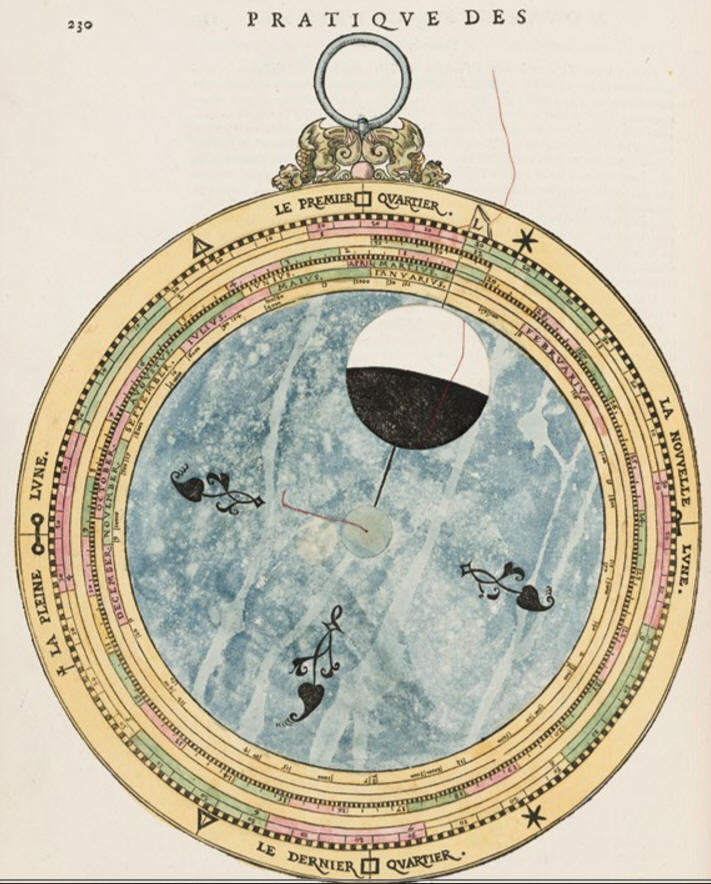
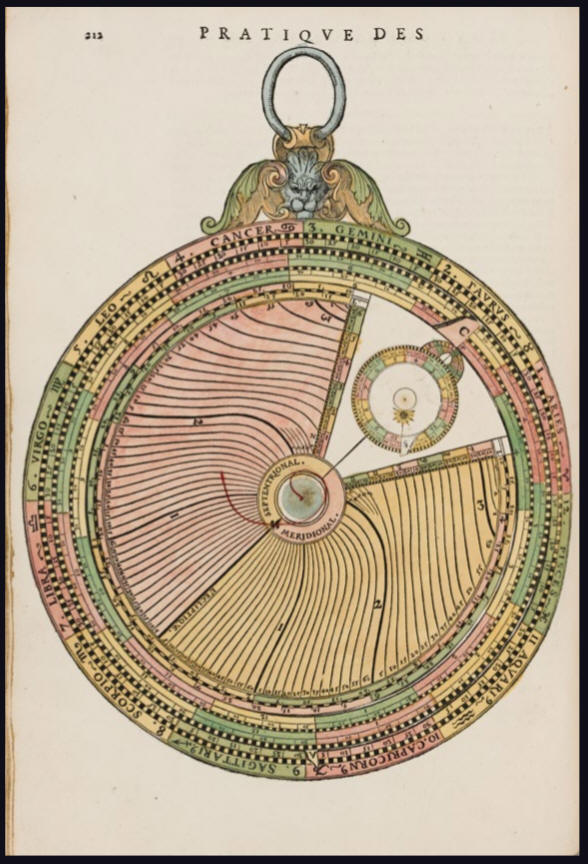
I planisferi celesti di Apiano e quindi anche quello di Bassantin si inseririscono nella tradizione che ha per riferimento la tavola di Dürer del 1515. Di seguito aggiungo a tal proposito una ulteriore scheda per cortesia di:

https://www.astronomie-nuernberg.de/index.php?category=duerer&page=bassantin-1557
Die
Himmelskarte von James Bassantin von 1557
James
Bassantin (um 1504-1568) war ein schottischer Mathematiker und Astrologe, der an
der Universität in Paris lehrte. 1557 brachte er in Lyon den Astronomique
Discours heraus, der Bl. 196veine Sternkarte enthielt, die die von
Apian von 1536 bzw. 1540 als Vorbild hatte. 1613 gab es in Genf eine Neuauflage
dieser Arbeit, 1599 erschien hier unter dem Titel Astronomia eine
lateinische Übersetzung, die auch in Köln und Leiden herauskam.
Weitere
Versionen online:
Astronomia von
1599, S. 174 [Smithonian Libraries, Washingthon]
Astronomia von
1599 S. 174 [Bibliothèque de Genève]
Weitere
Version aus dem 17. Jahrhundert [HAB Wolfenbüttel]
Weitere
Version aus dem 17. Jahrhundert [HAB Wolfenbüttel]
Aufbewahrende
Institution:
Französische
Nationalbibliothek, Paris: GE DD- 1688 (Ausgabe von 1577)
Smithonian
Libraries, Washingthon: 2 A-2K4 (Lateinische Ausgabe von 1599)
Bibliothèque
de Genève: Kb 26 (Lateinische Ausgabe von 1599)
Deutsches
Museum, München: 3000/1929 C 45 (Neuauflage von 1613)
Literatur:
Kanas,
Nick: Star Maps. History, Artistry and Cartography. Chicester: Praxis Publishing
2007, S. 331
Kunitzsch,
Paul: Peter Apian und Azophi. Arabische Sternbilder in Ingolstadt im frühen 16.
Jahrhundert. München: Verlag der Bayerischen Akademie der Wissenschaft 1986
Englische Version aus dem Journal for the history of astronomy (mit Abbildung der Karte)
Consulta
la prima edizione in francese per cortesia di Google
Consulta
l’edizione in latino per cortesia di e-rara
http://www.e-rara.ch/gep_g/content/thumbview/4182511
Astronomia J Bassantini Scoti Opus absolutissimum in quo quidquid unquam peritio.pdf
Tavola del 1557
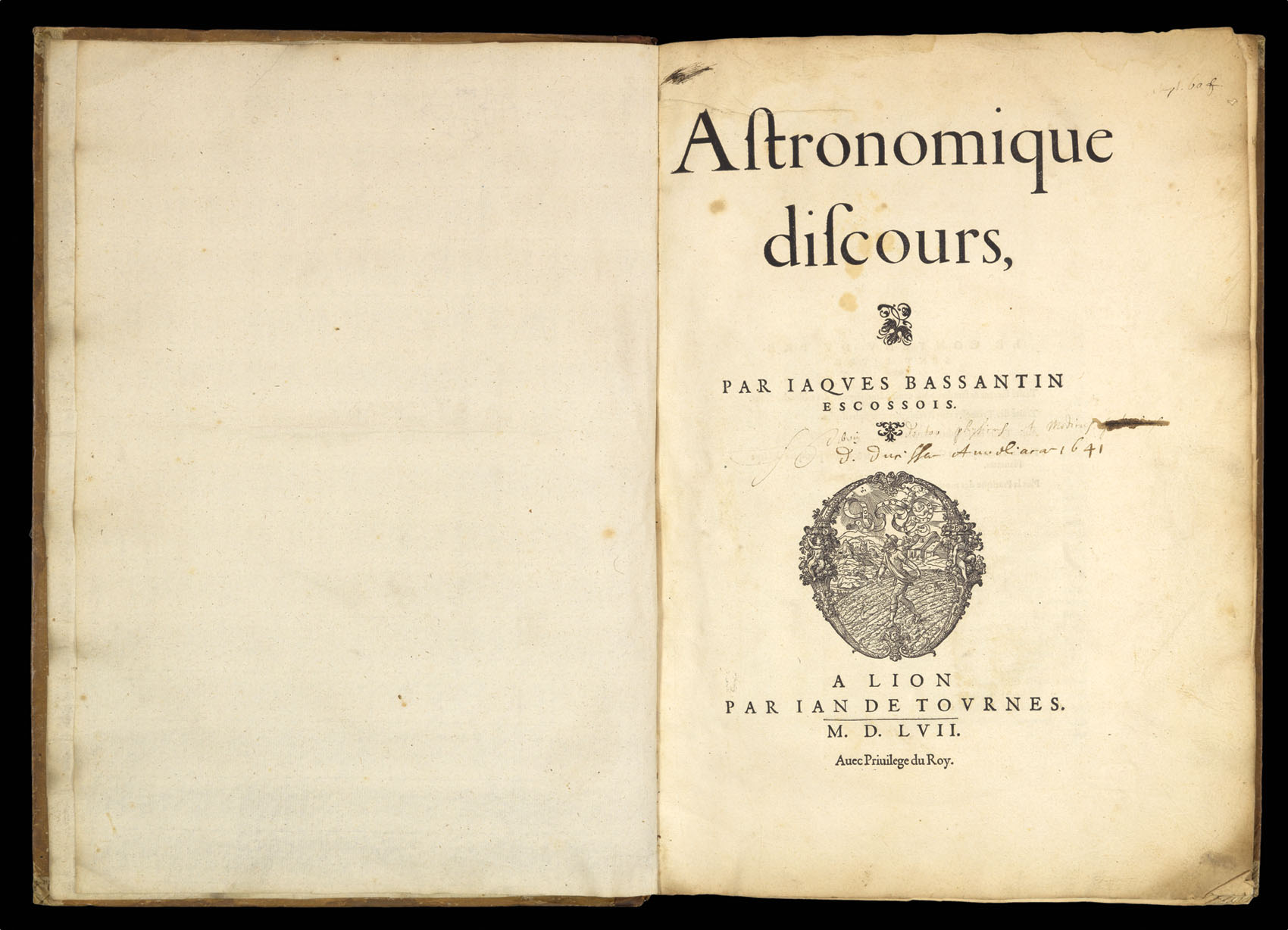
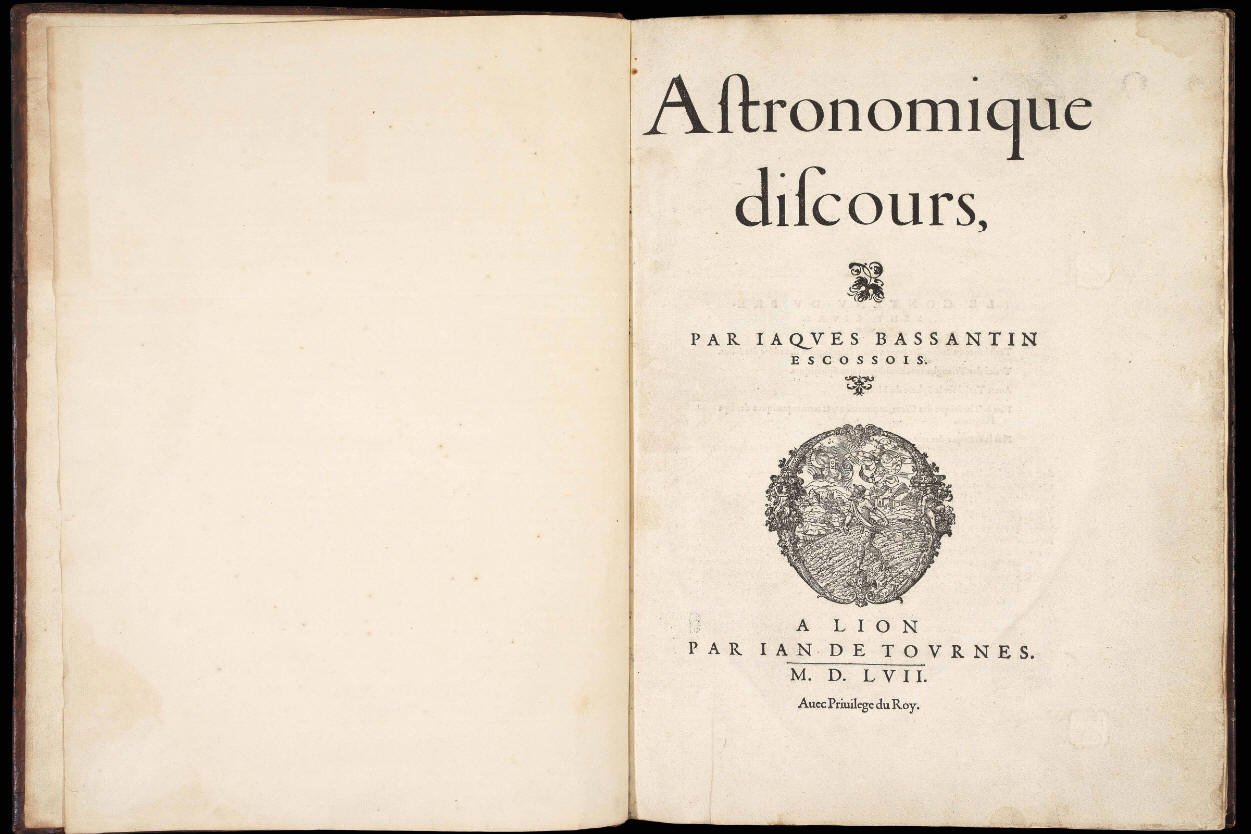
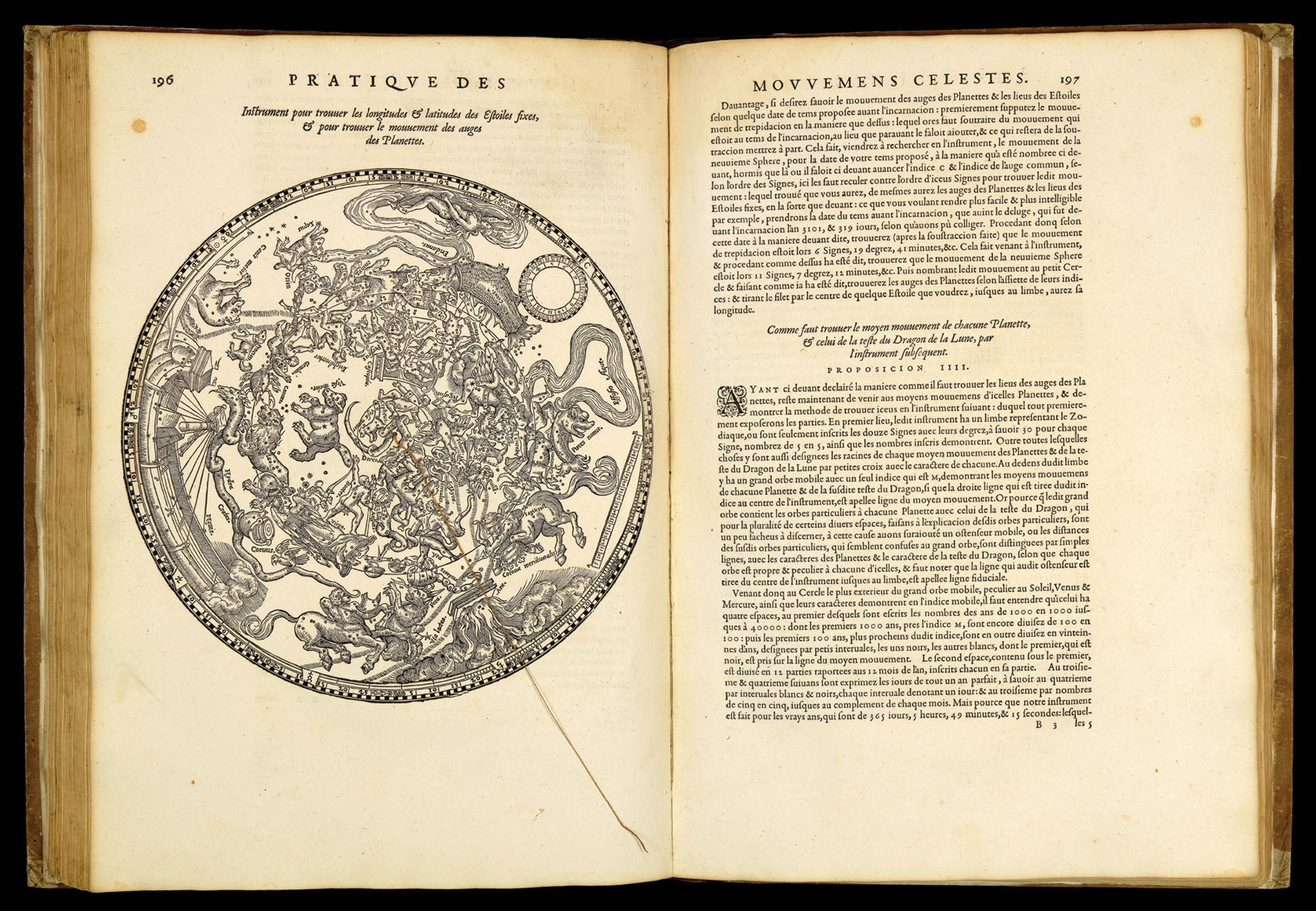
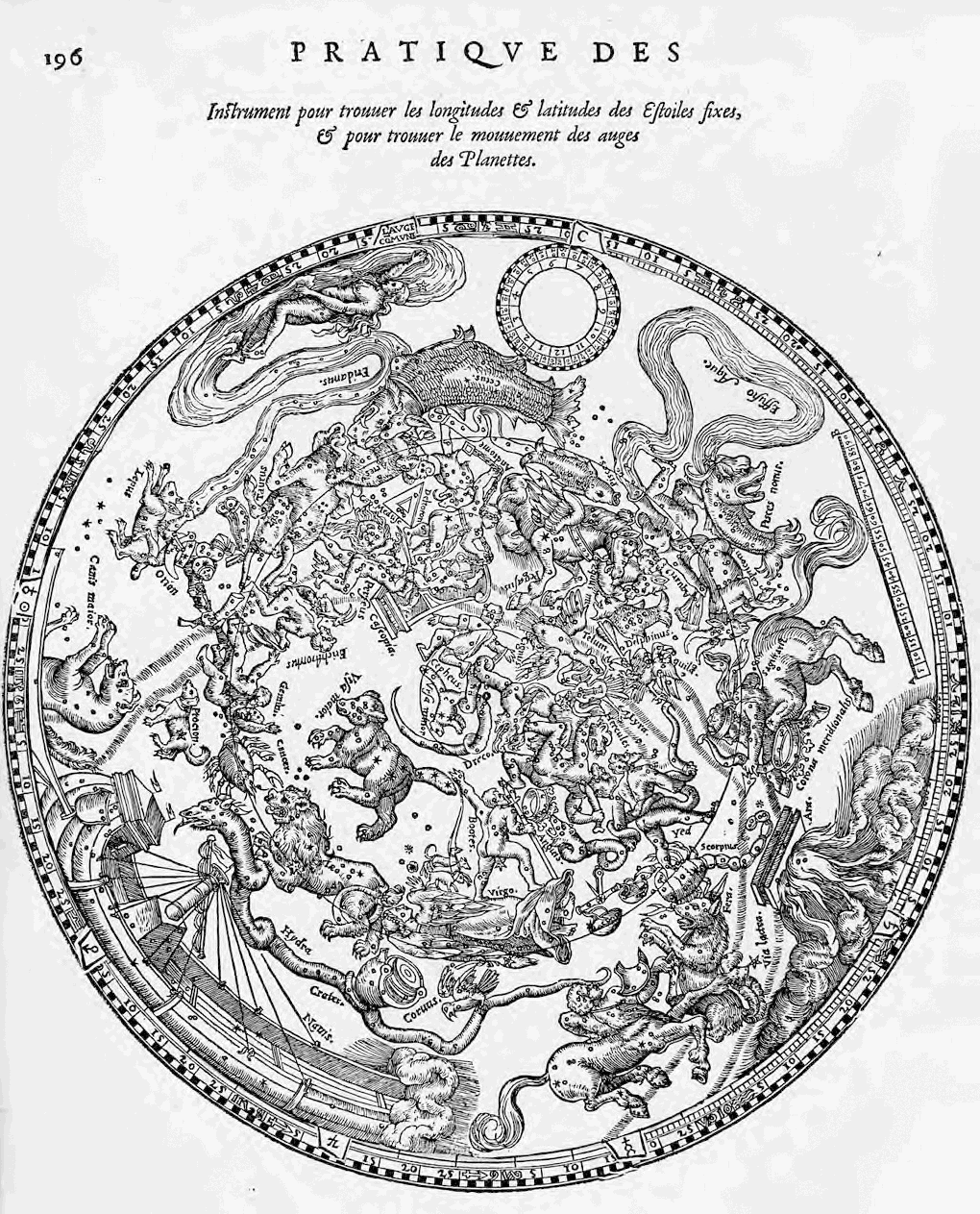
Tavola dell’edizione in latino del 1599
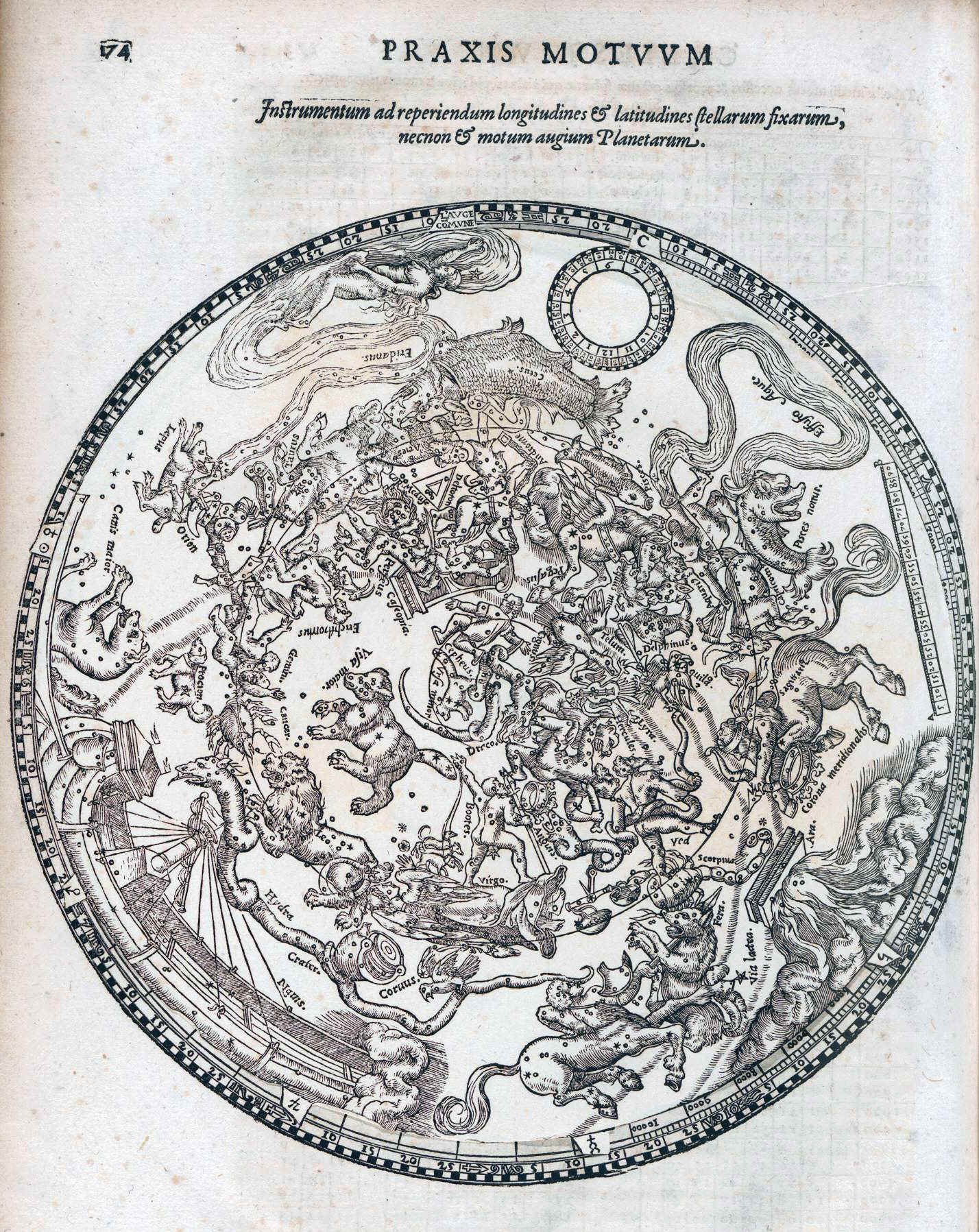
Tavola dell’edizione del 1613

http://bdh.bne.es/bnesearch/detalle/bdh0000198555
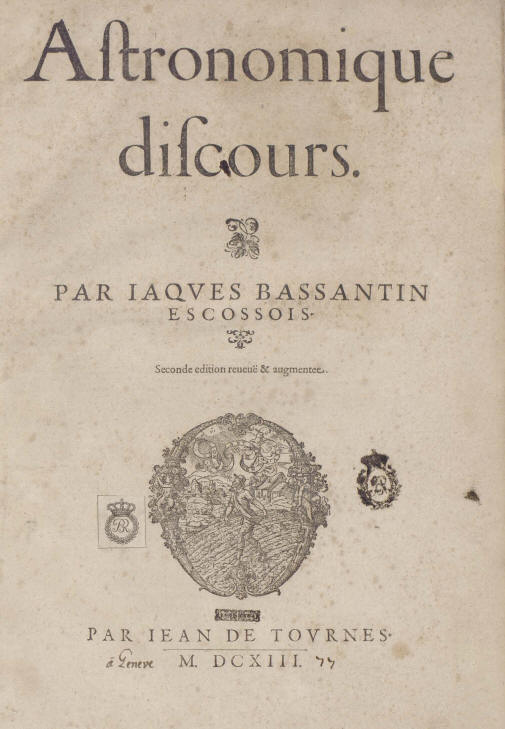
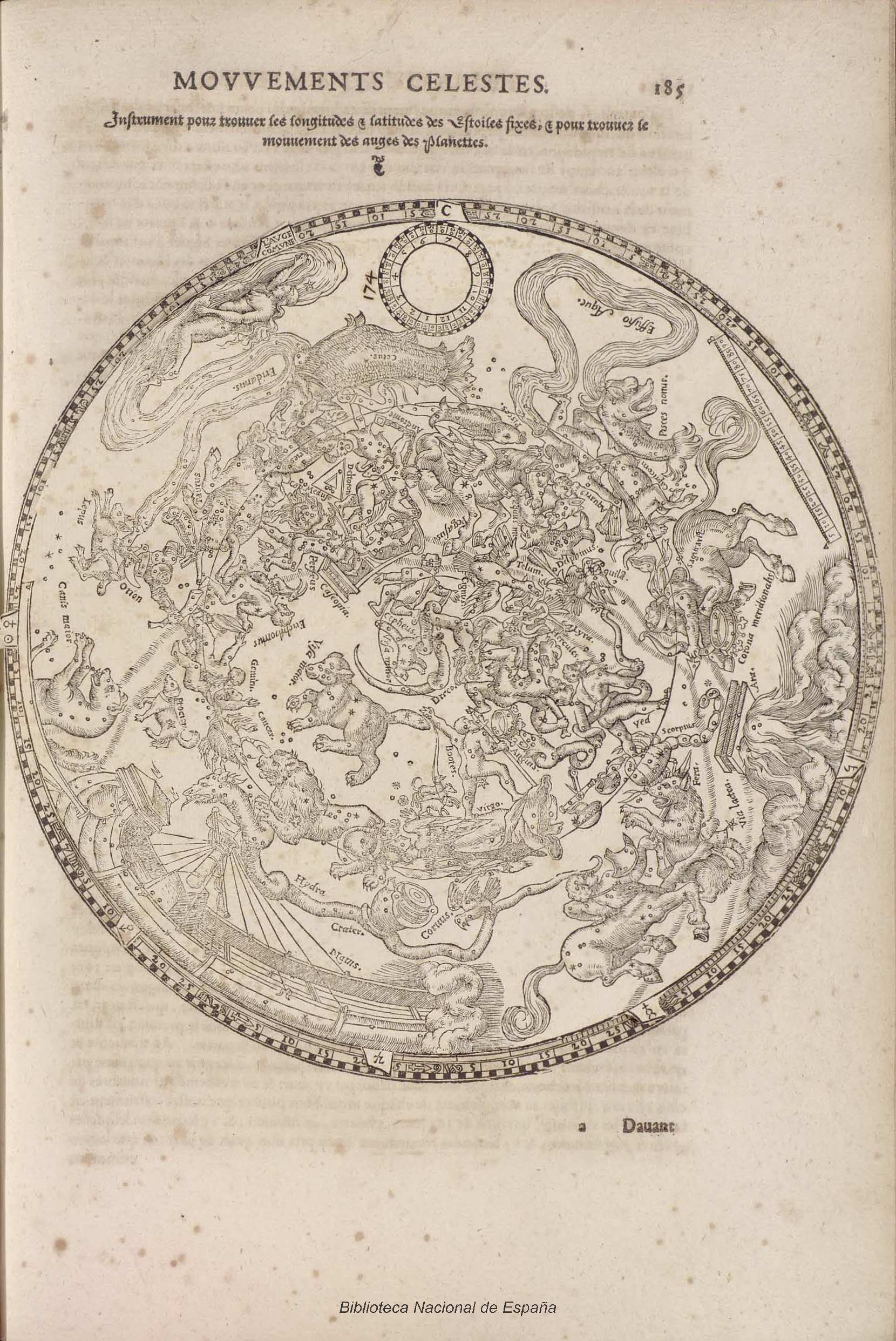
Titolo
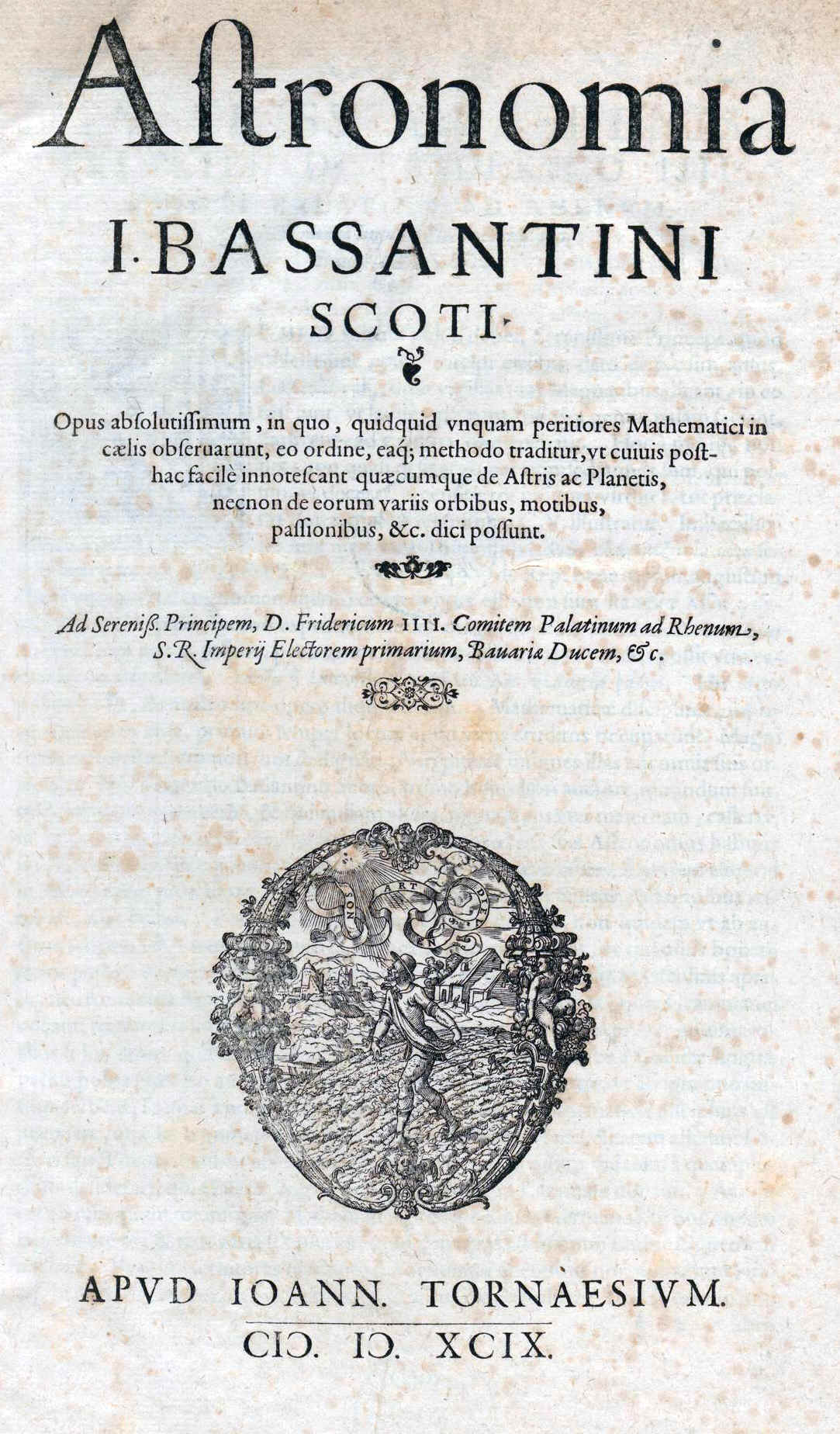
Indici
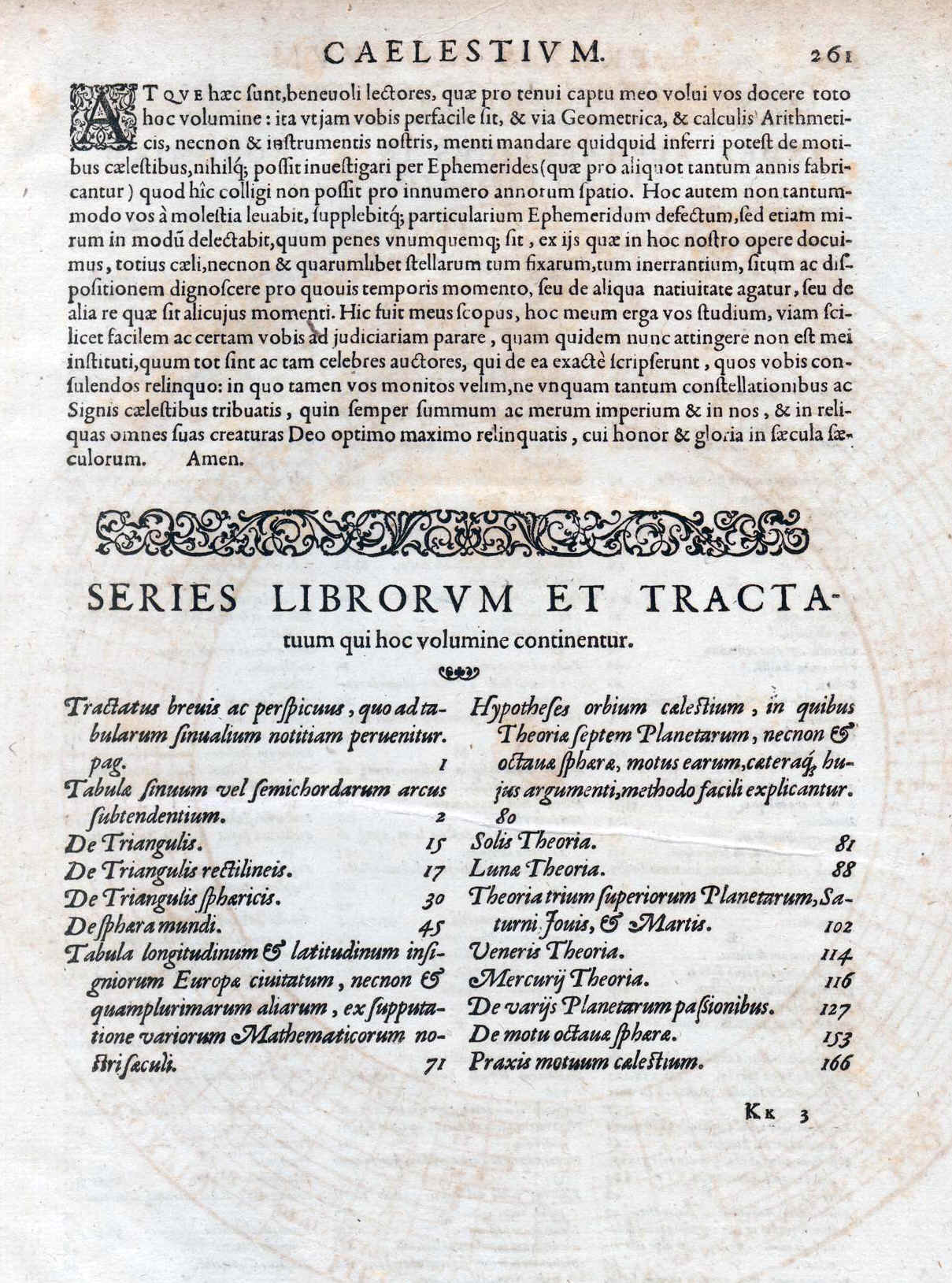
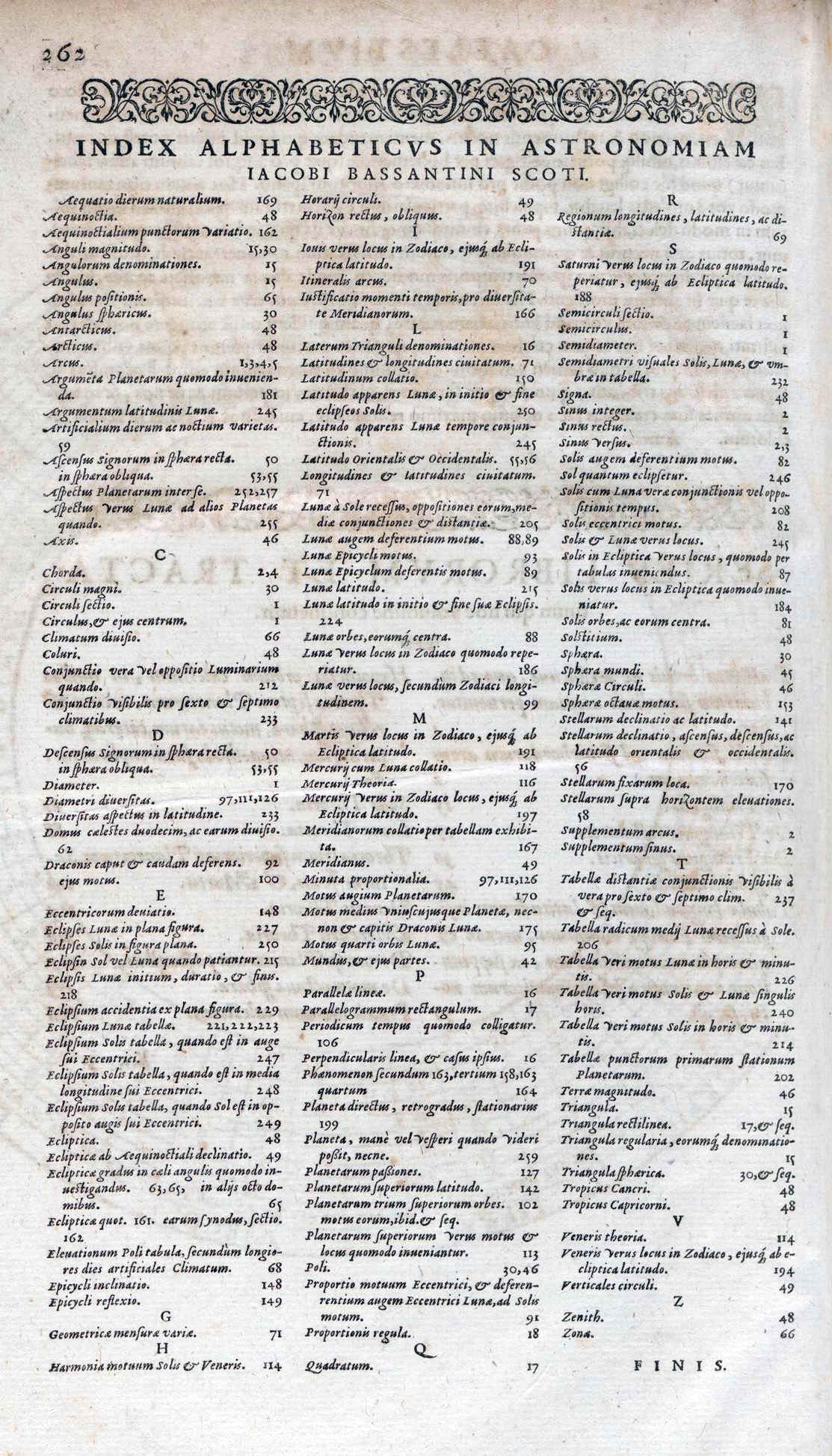
Le
altre volvelle nelle due edizioni
59 Des cercles de la sphère. [ Le Monde soutenu à bout de bras ]
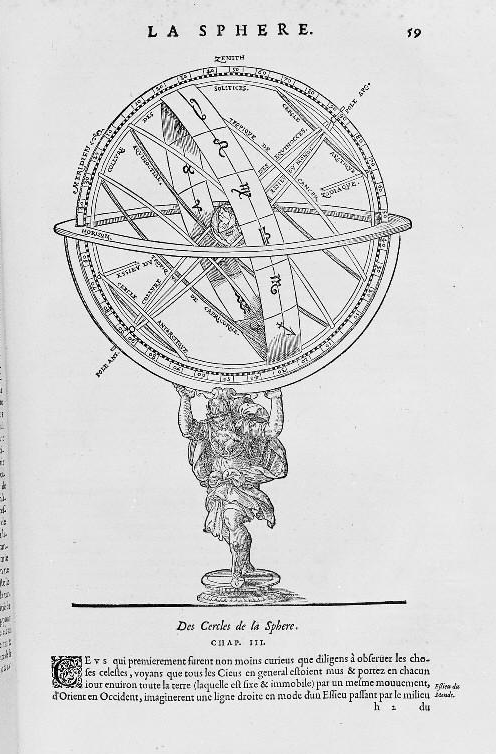
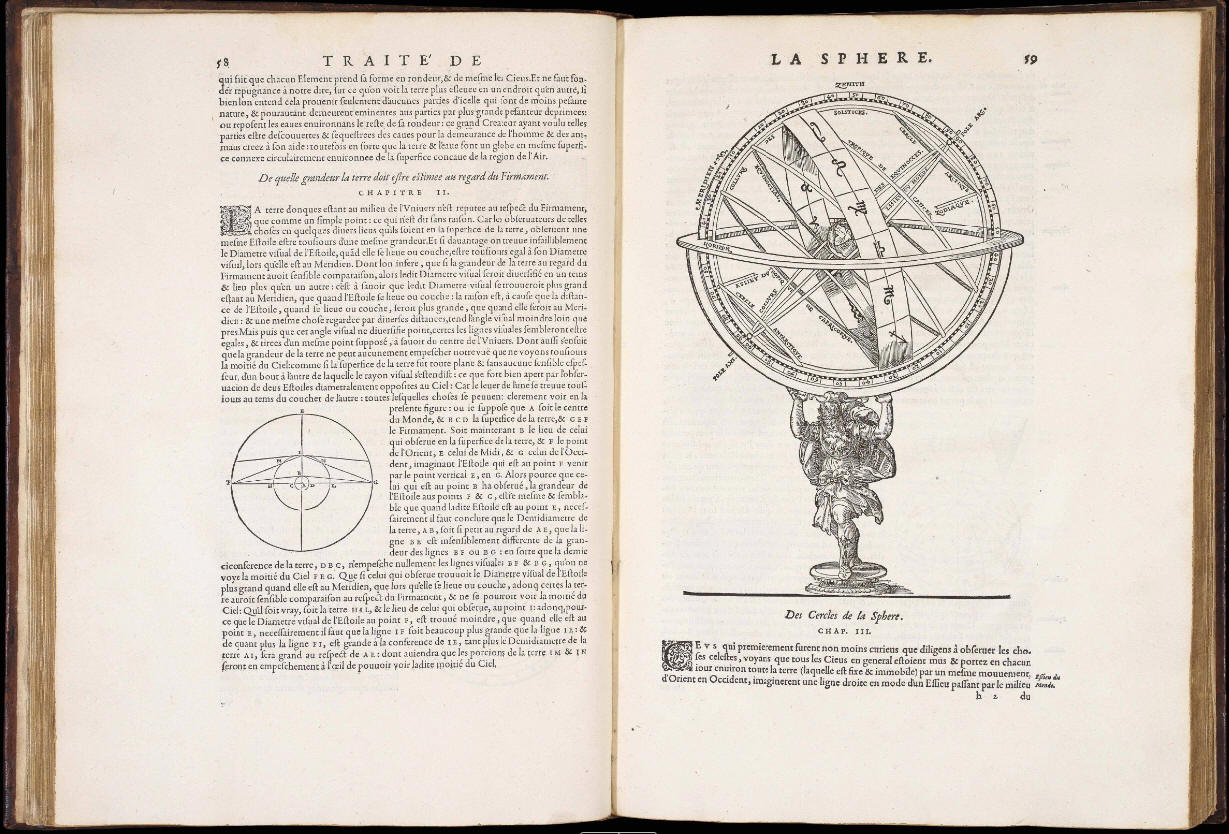
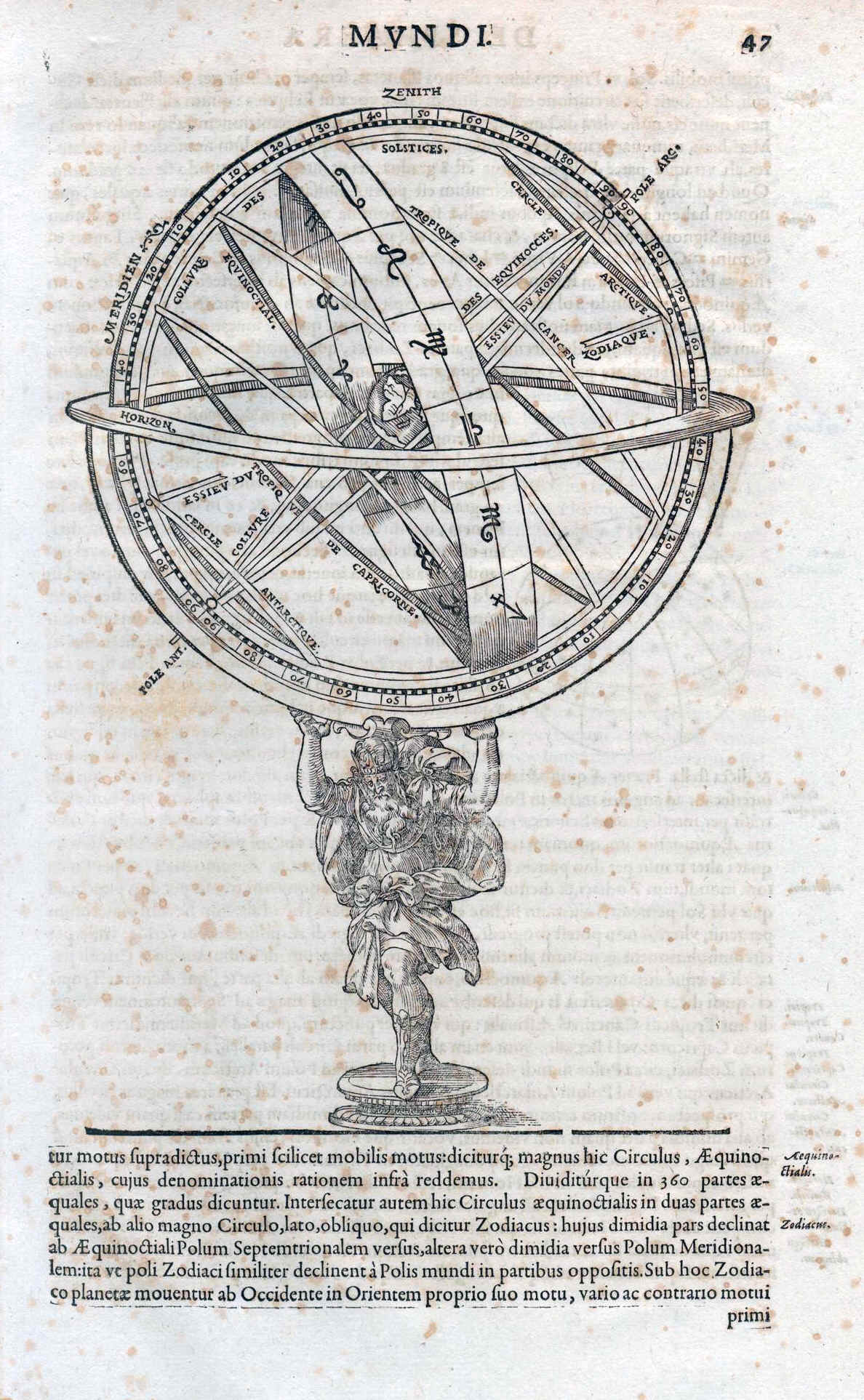
196 [ Instrument pour trouver les longitudes et les latitudes des étoiles fixes et pour trouver le mouvement des planètes ]

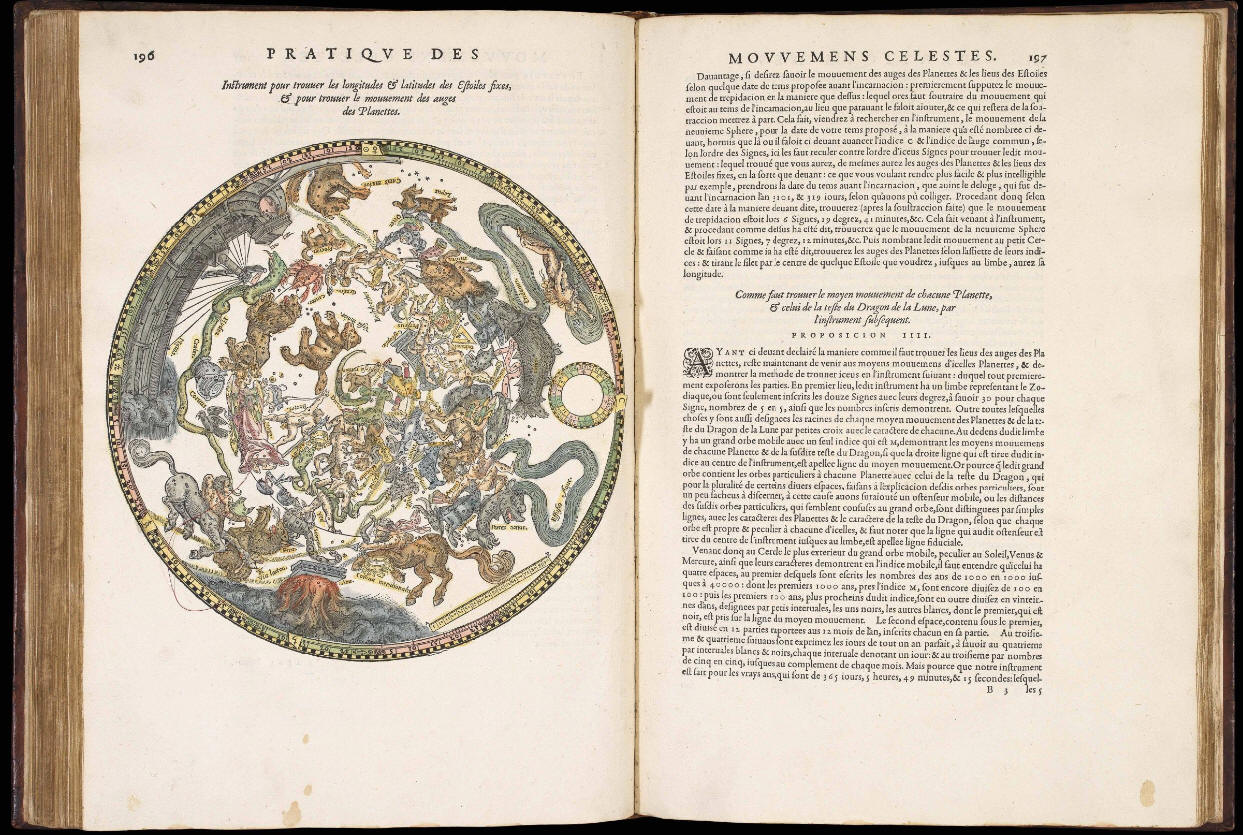
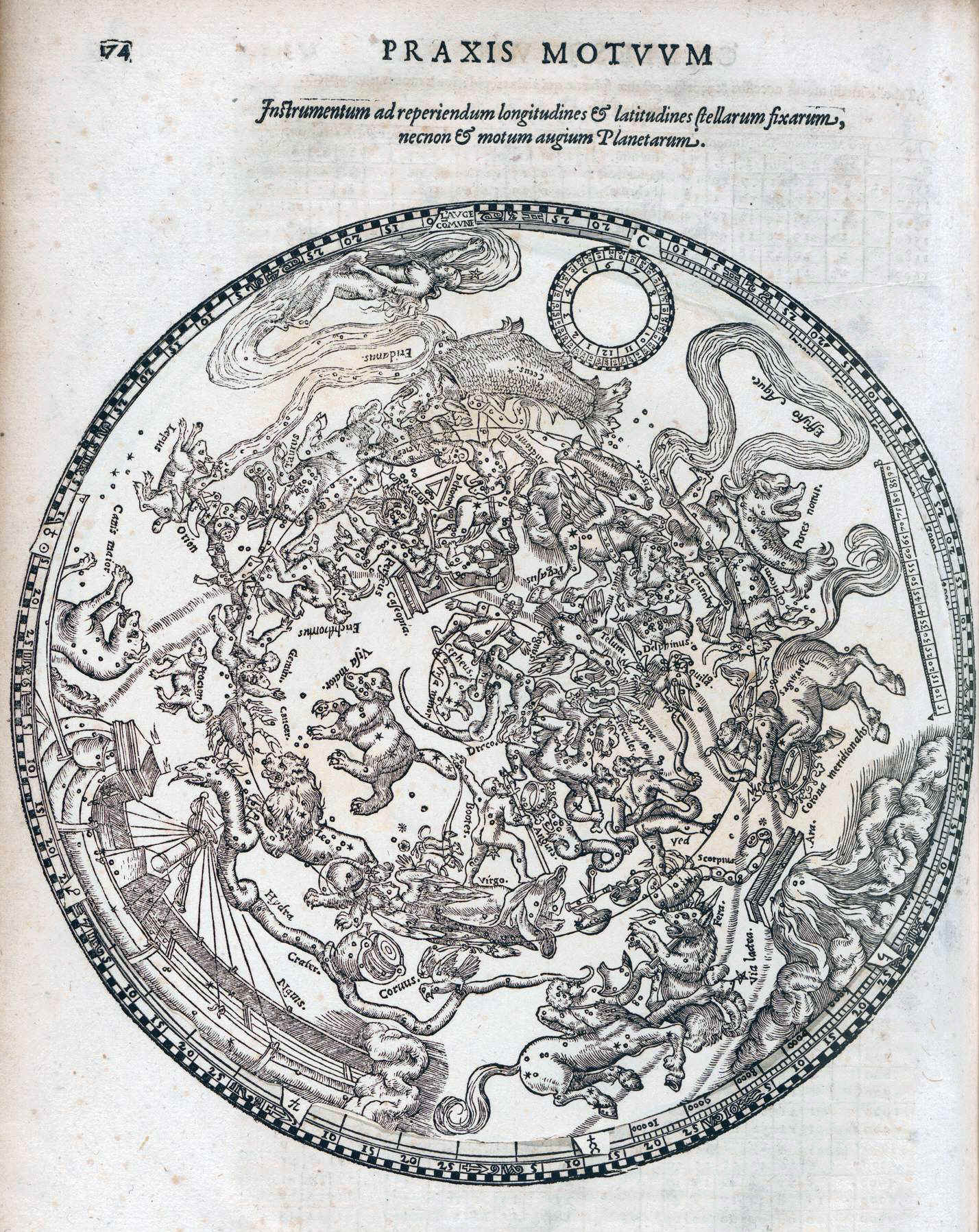
202
[ Disque mobile pour calculer les mouvements des planètes et de la lune ]
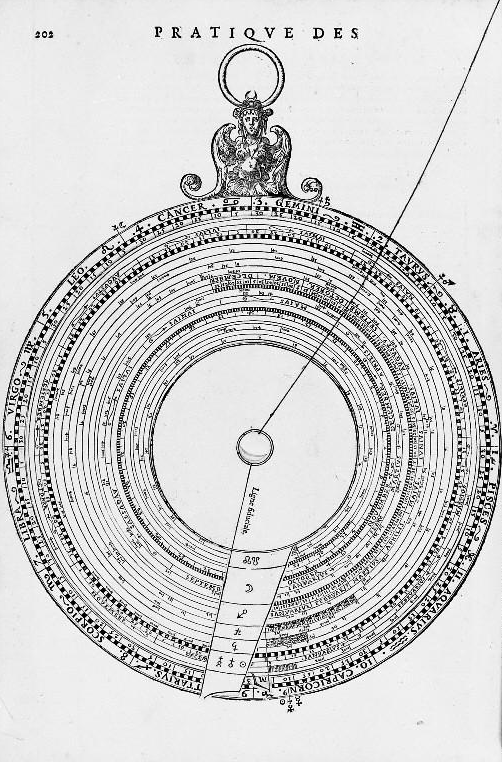
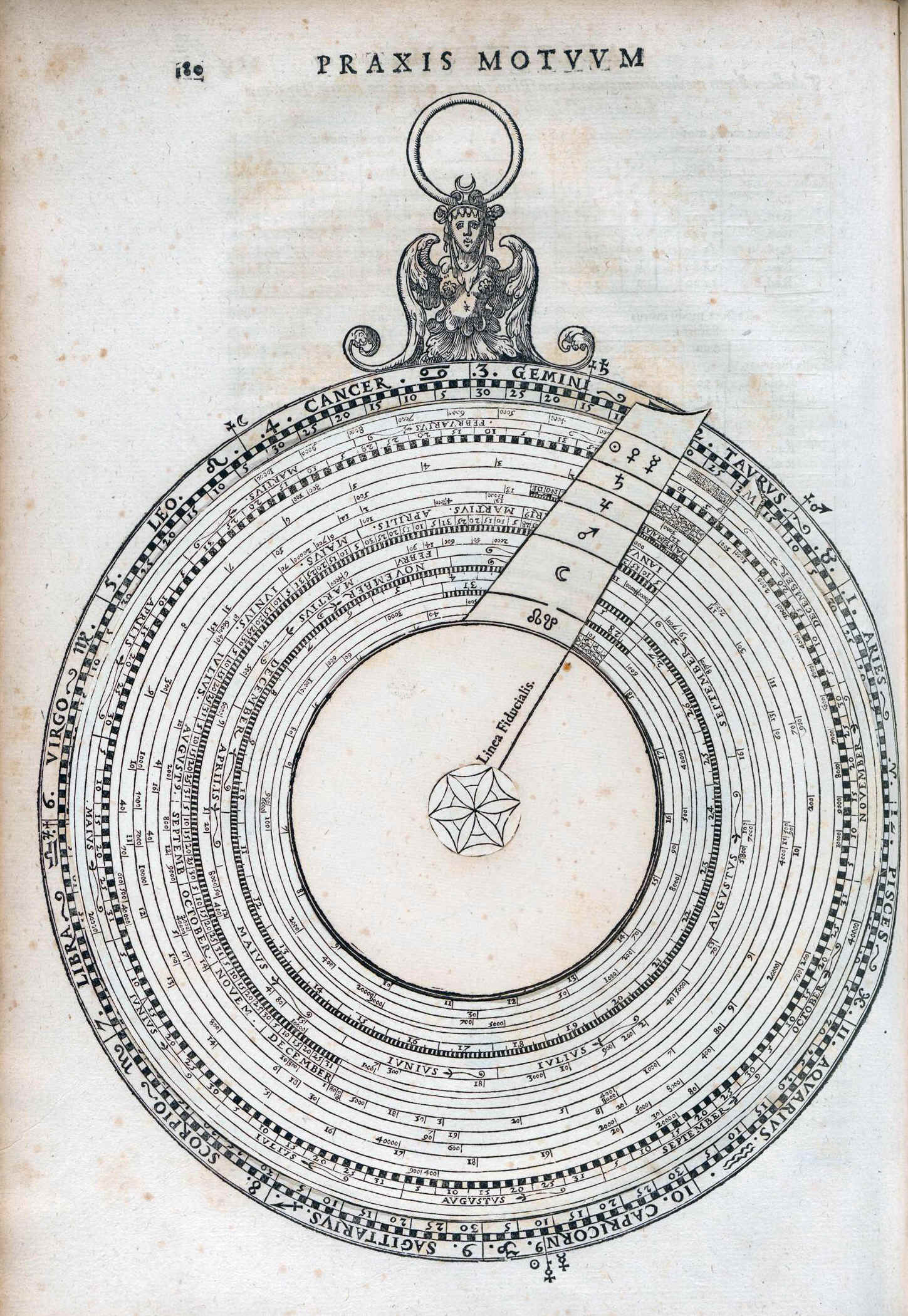
205
[ Disque mobile pour calculer les mouvements des planètes et de la lune ]
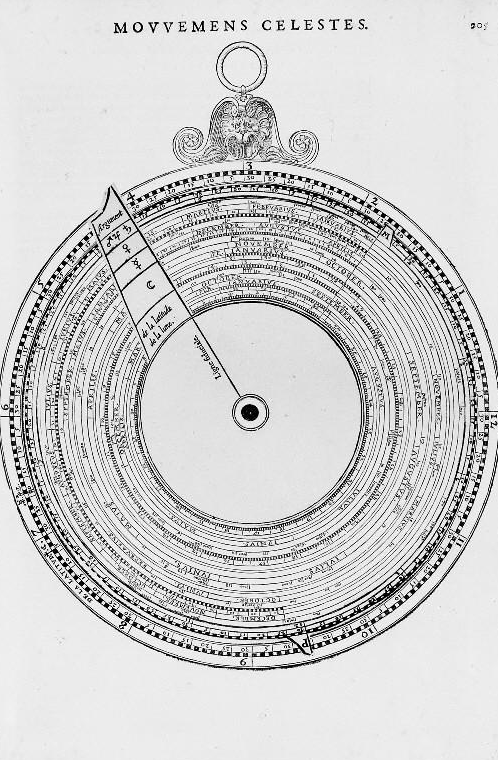
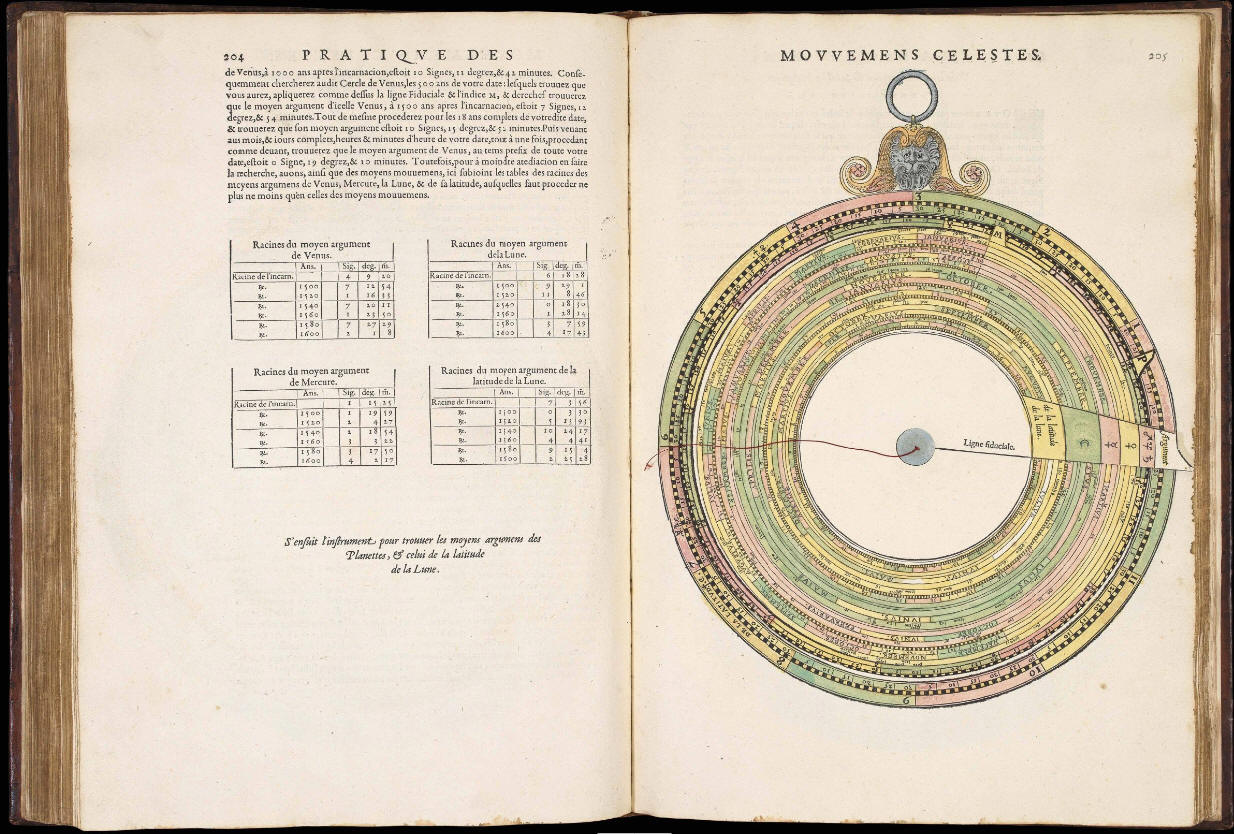
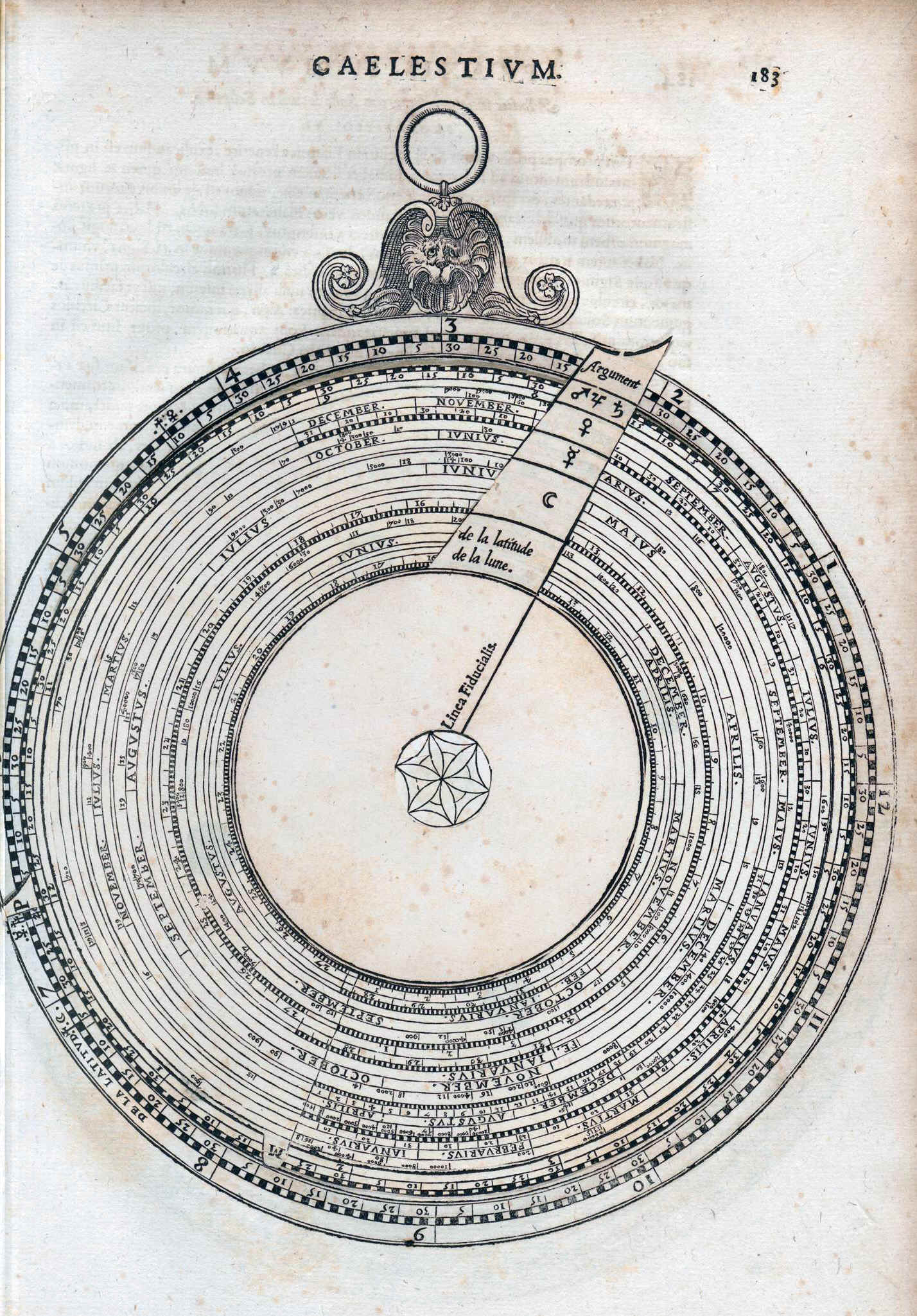
207 [ Disque mobile pour trouver la position du soleil au zodiaque ]
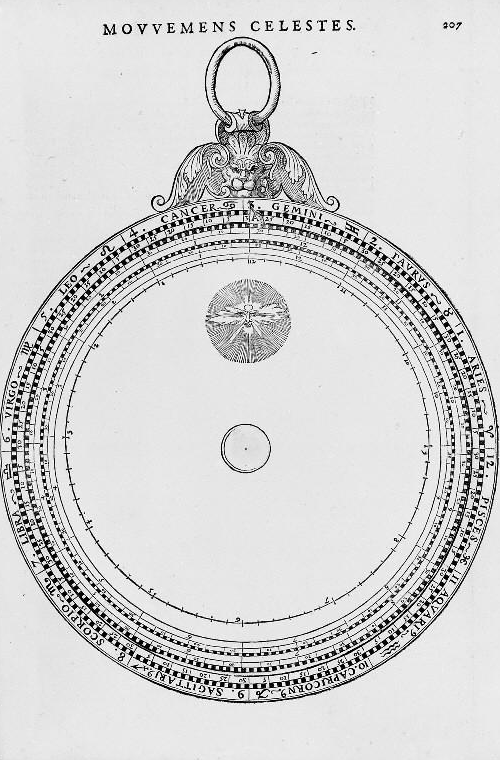
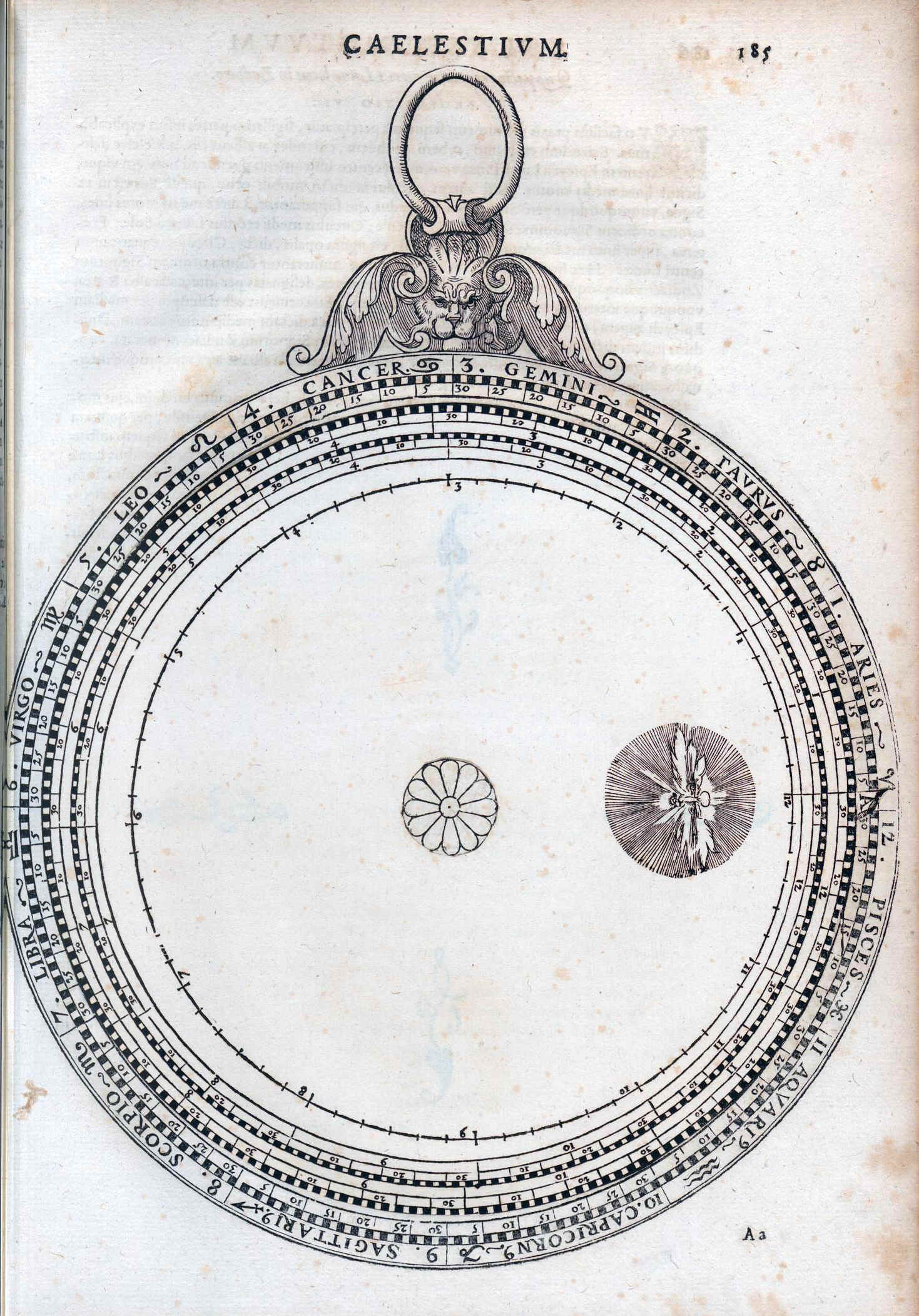
209
[ Disque mobile pour trouver la position de la lune au zodiaque ]
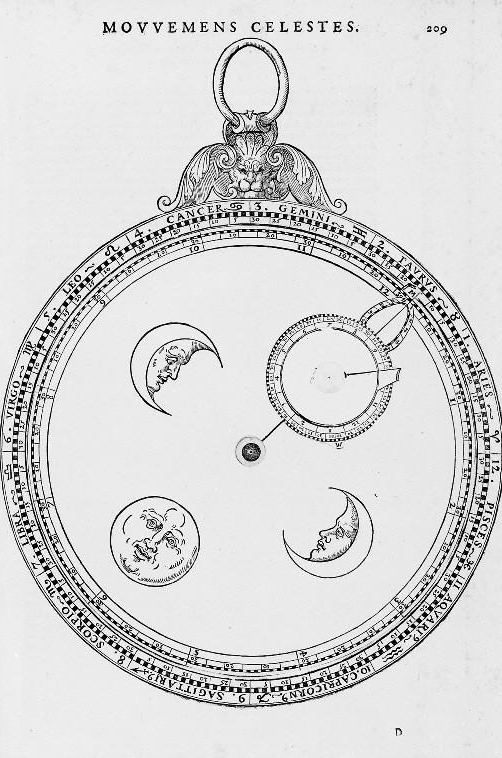
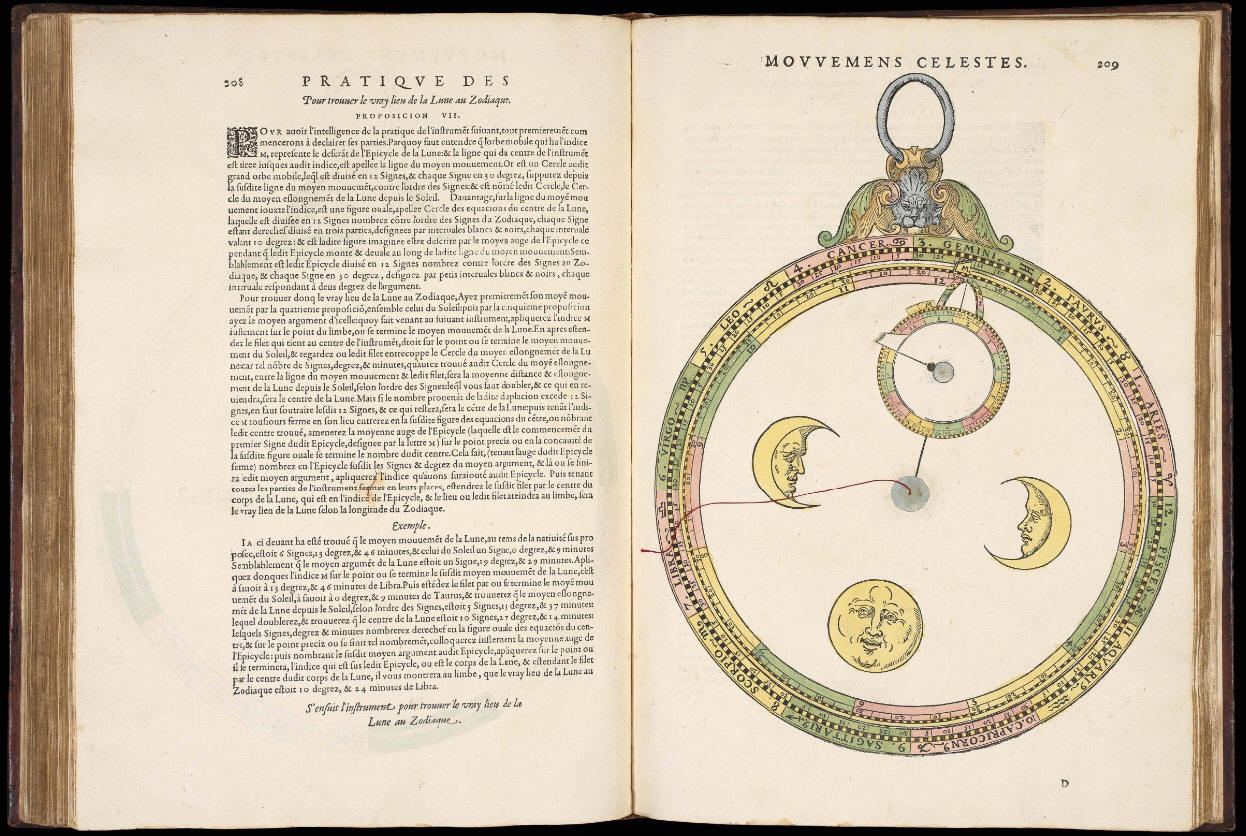
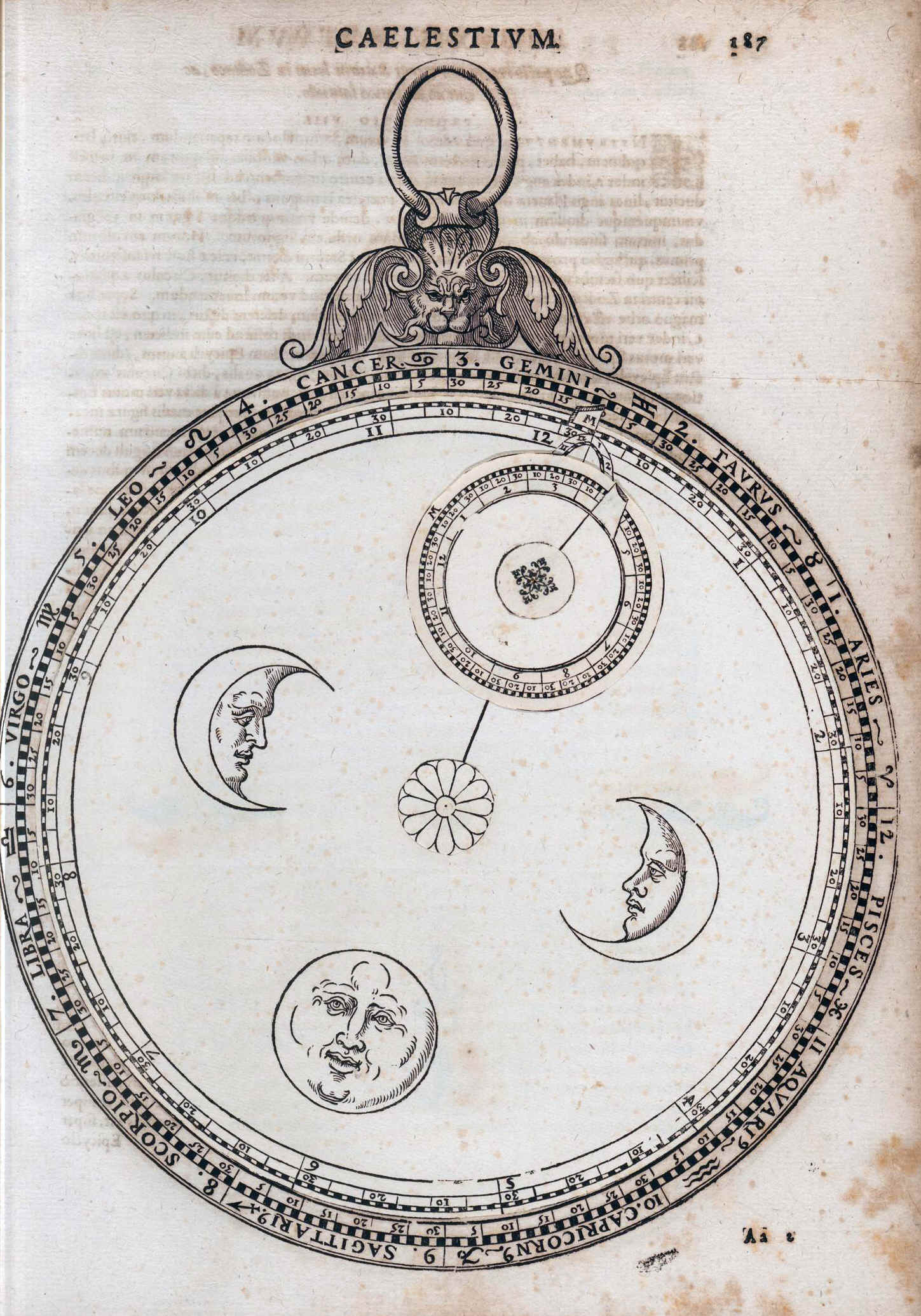
212
[ Disque mobile pour trouver la position de Jupiter au zodiaque ]
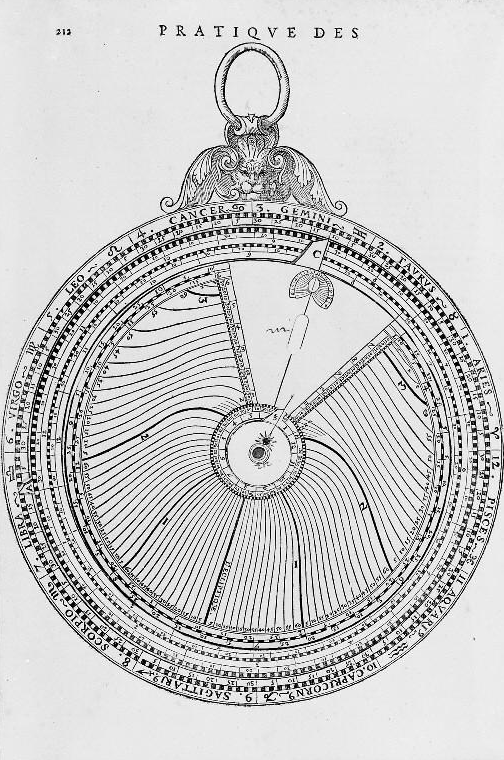
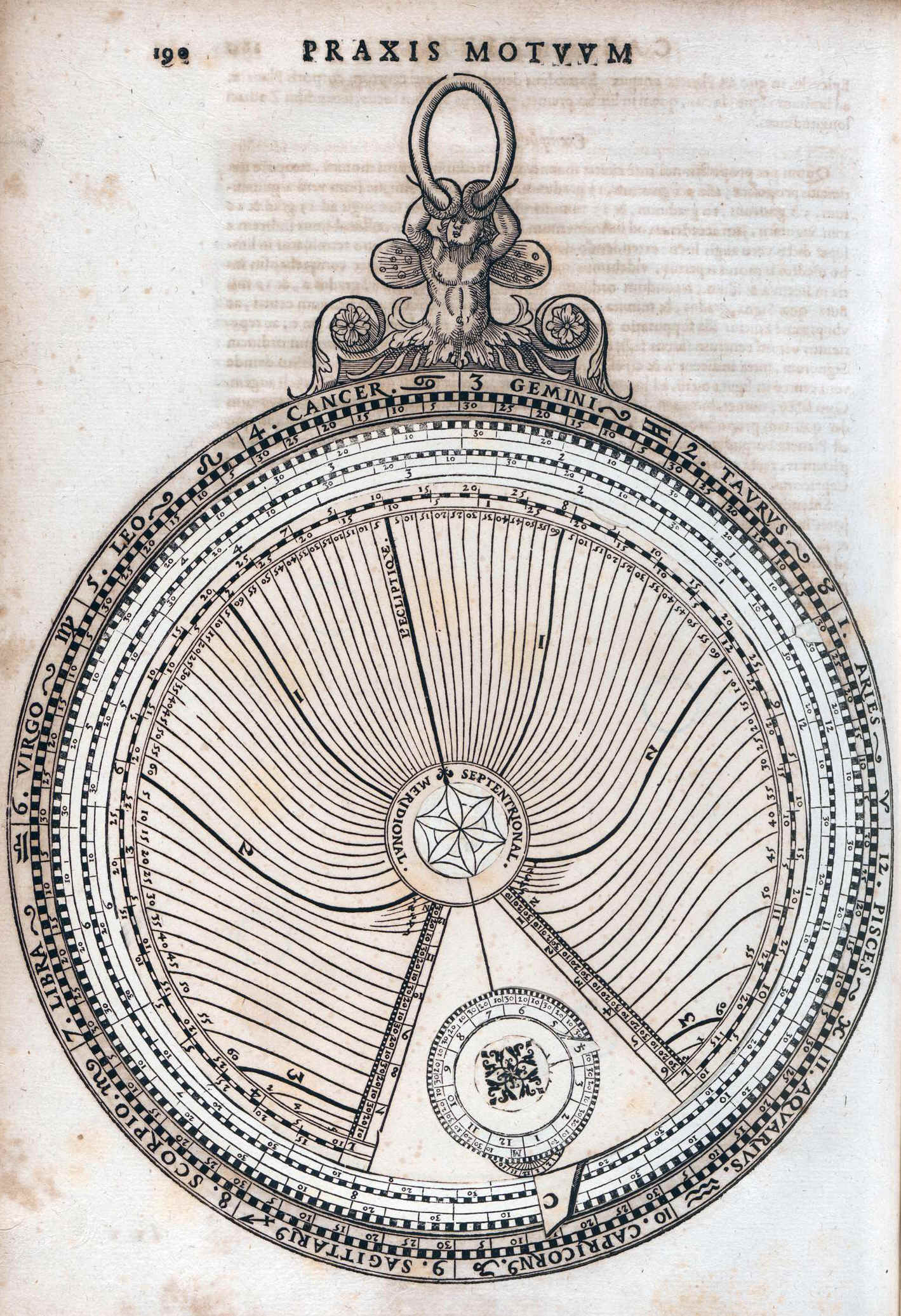
214 [ Disque mobile pour trouver la position de Mars au zodiaque ]
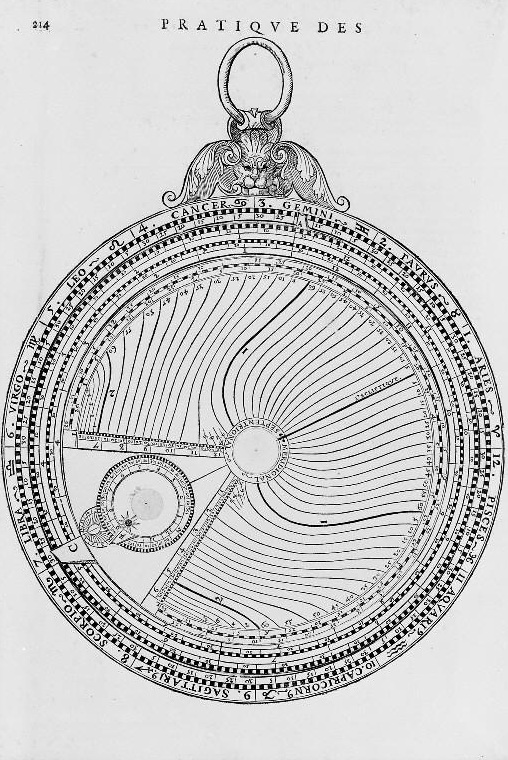
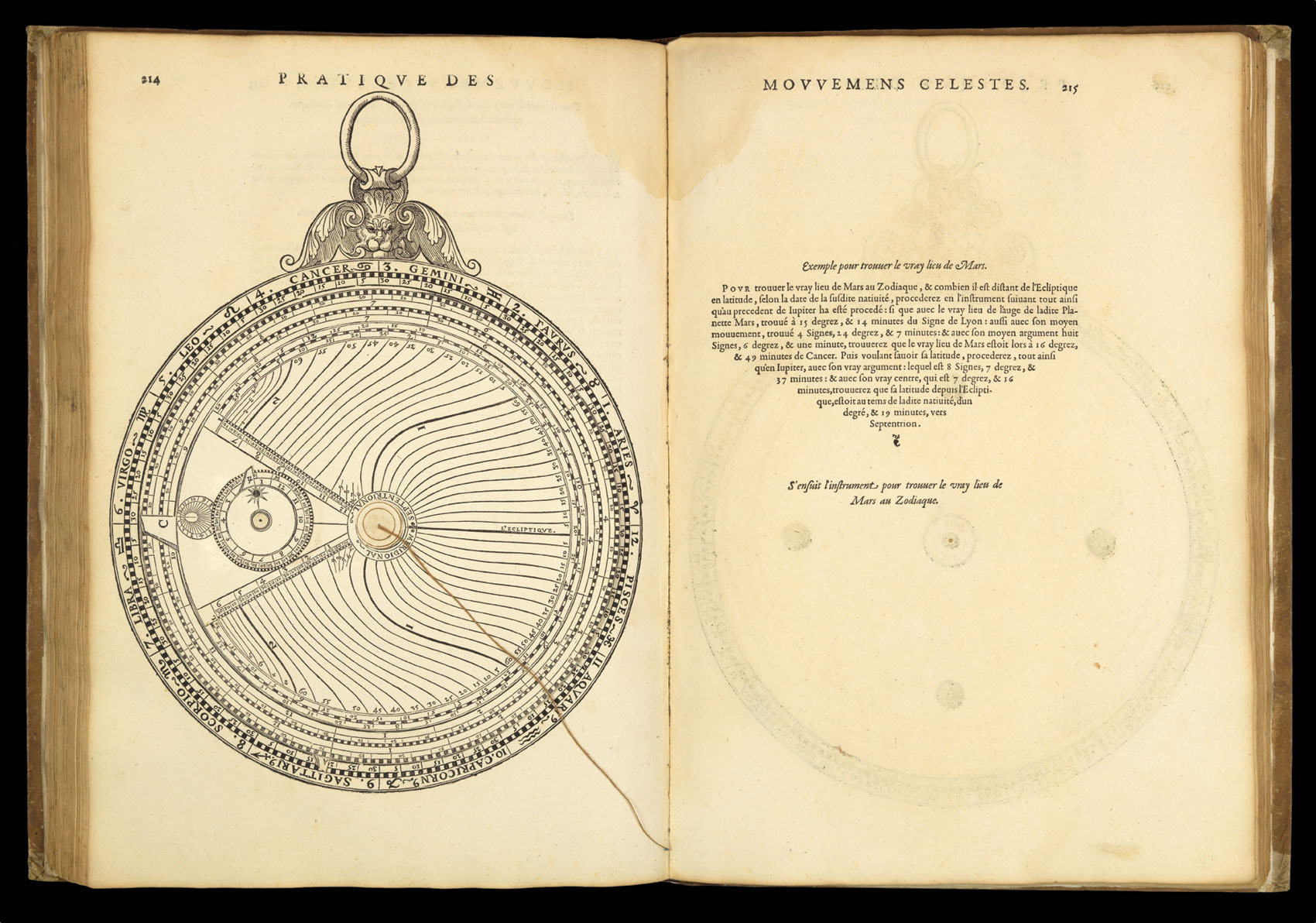
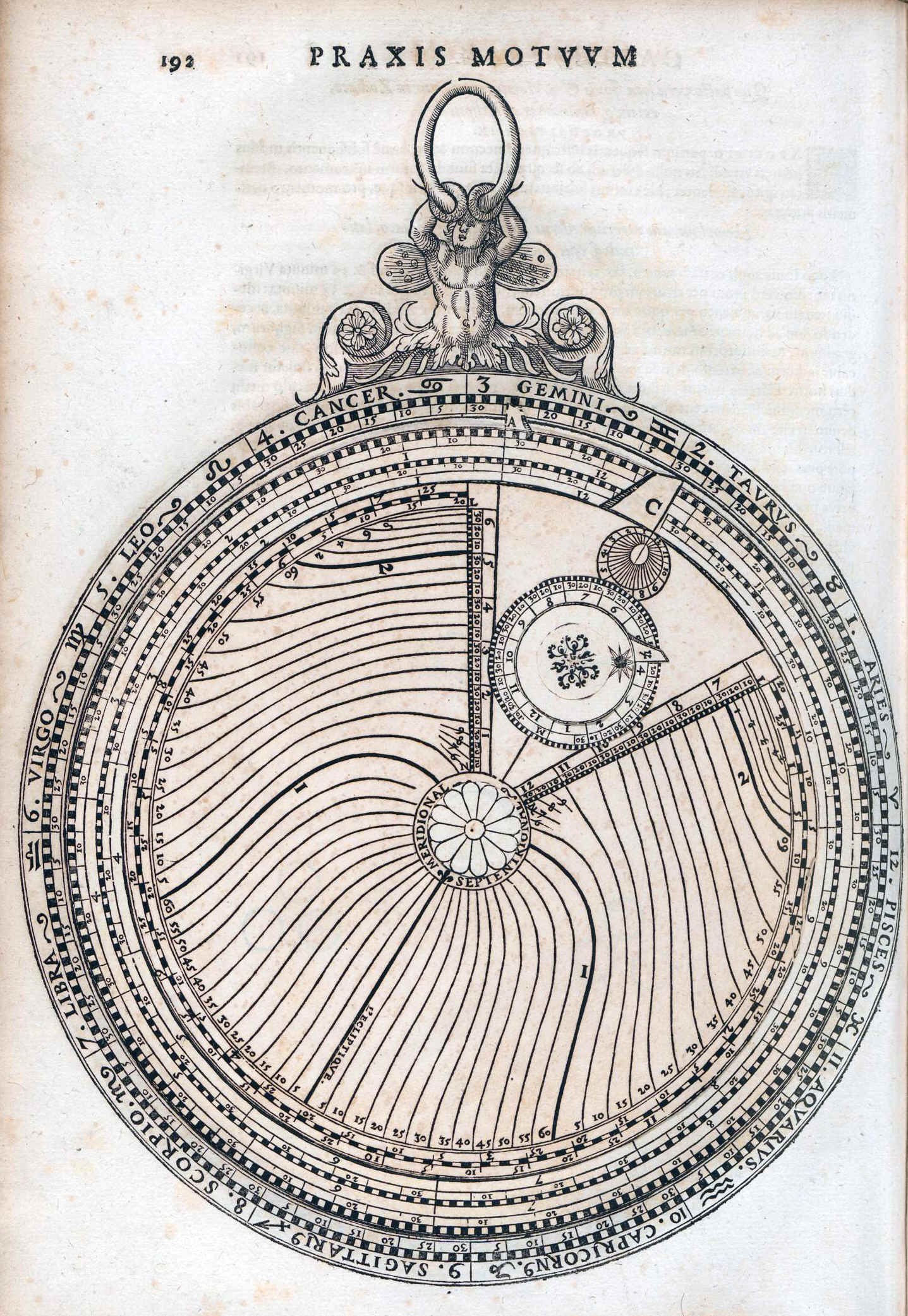
216 [ Disque mobile pour trouver la position de Vénus au zodiaque et sa latitude depuis l'écliptique ]
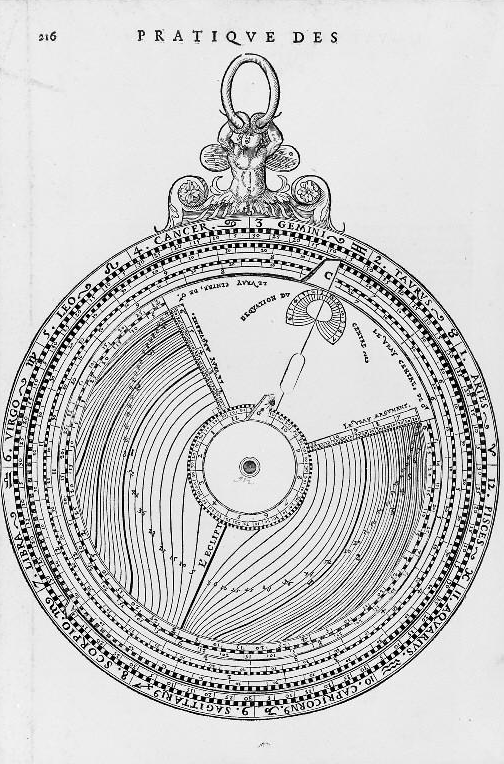
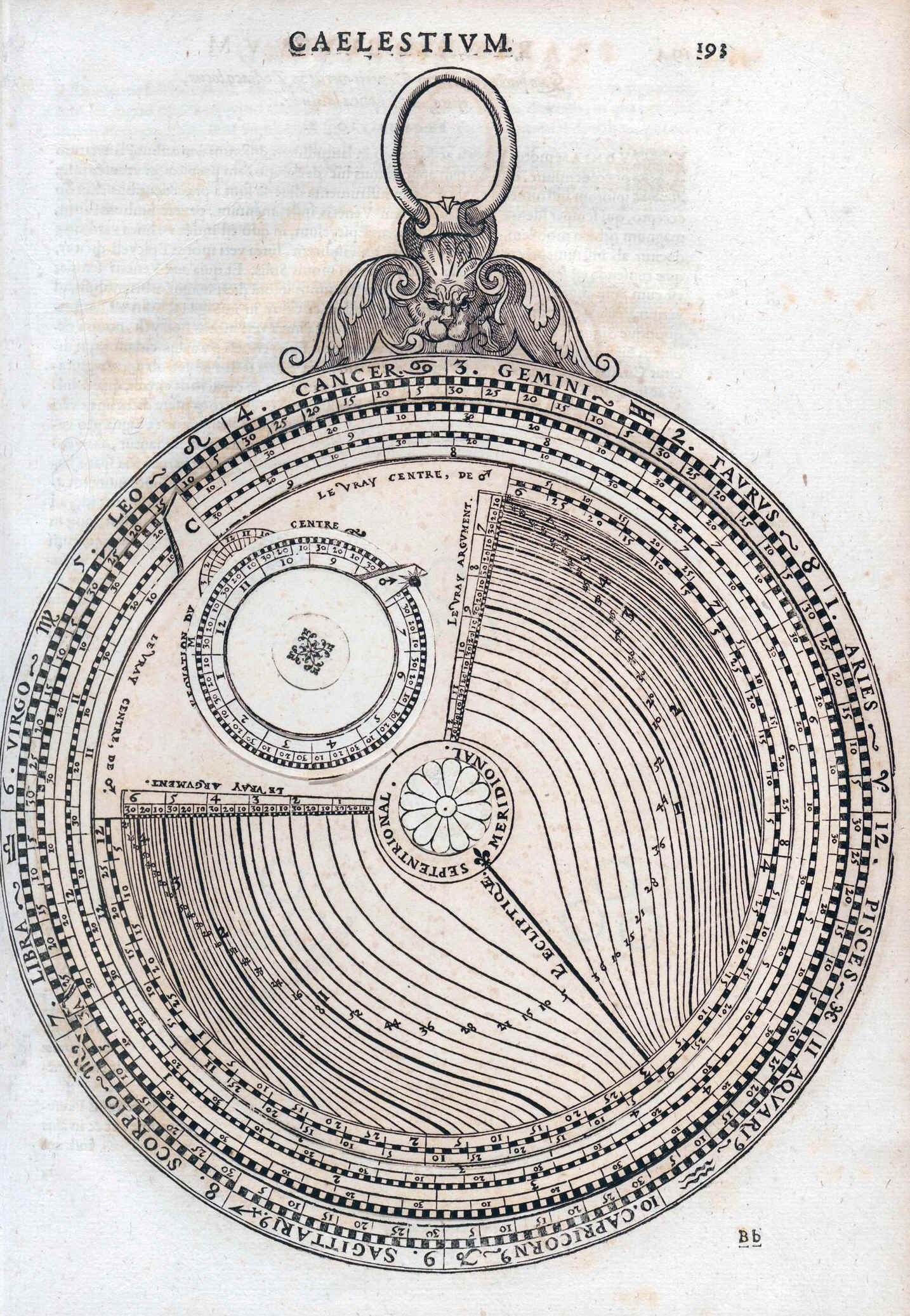
219 [ Disque mobile pour trouver la position de Vénus au zodiaque ]
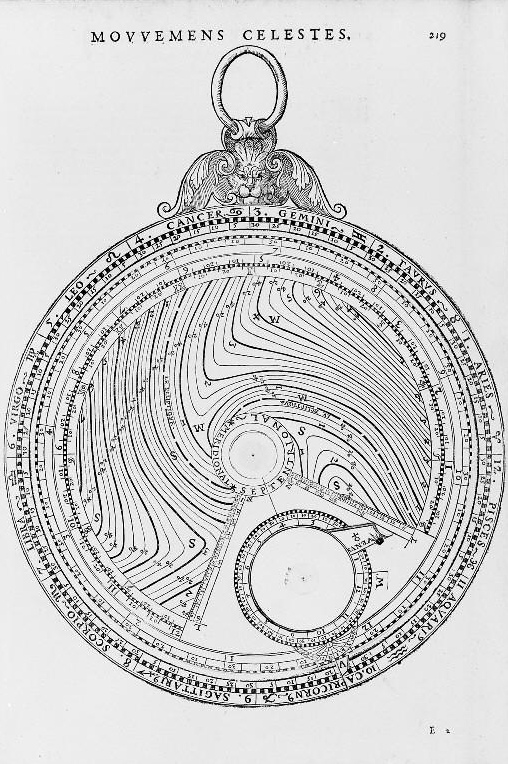
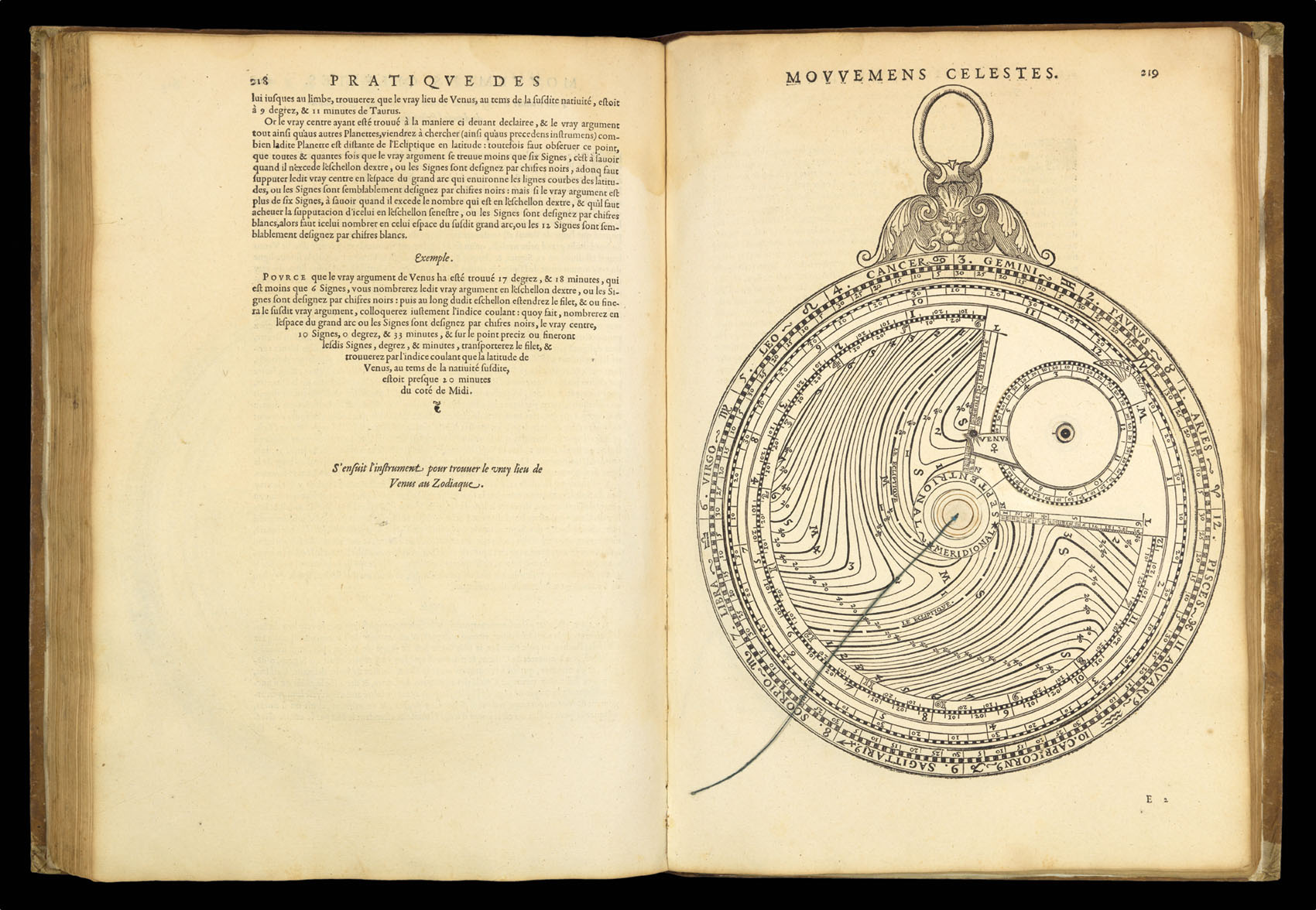
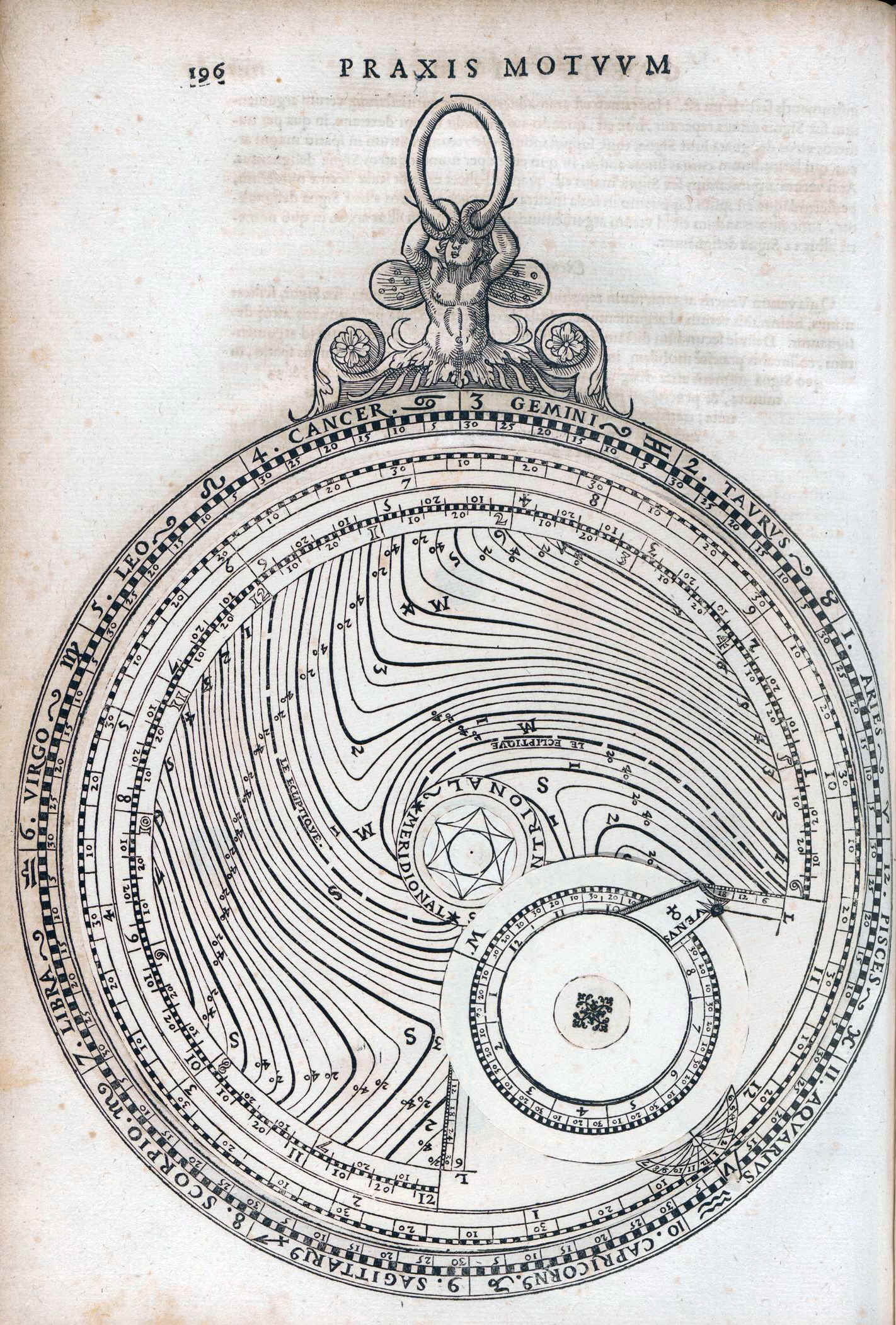
221 [ Disque mobile pour trouver la position de Mercure au zodiaque ]
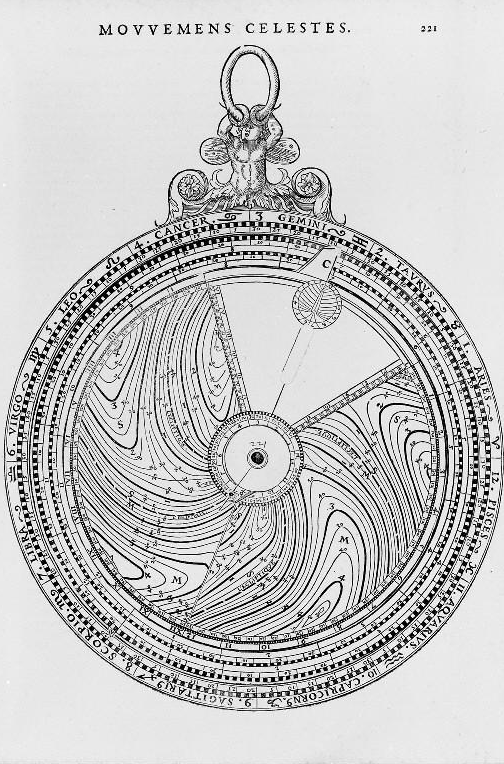
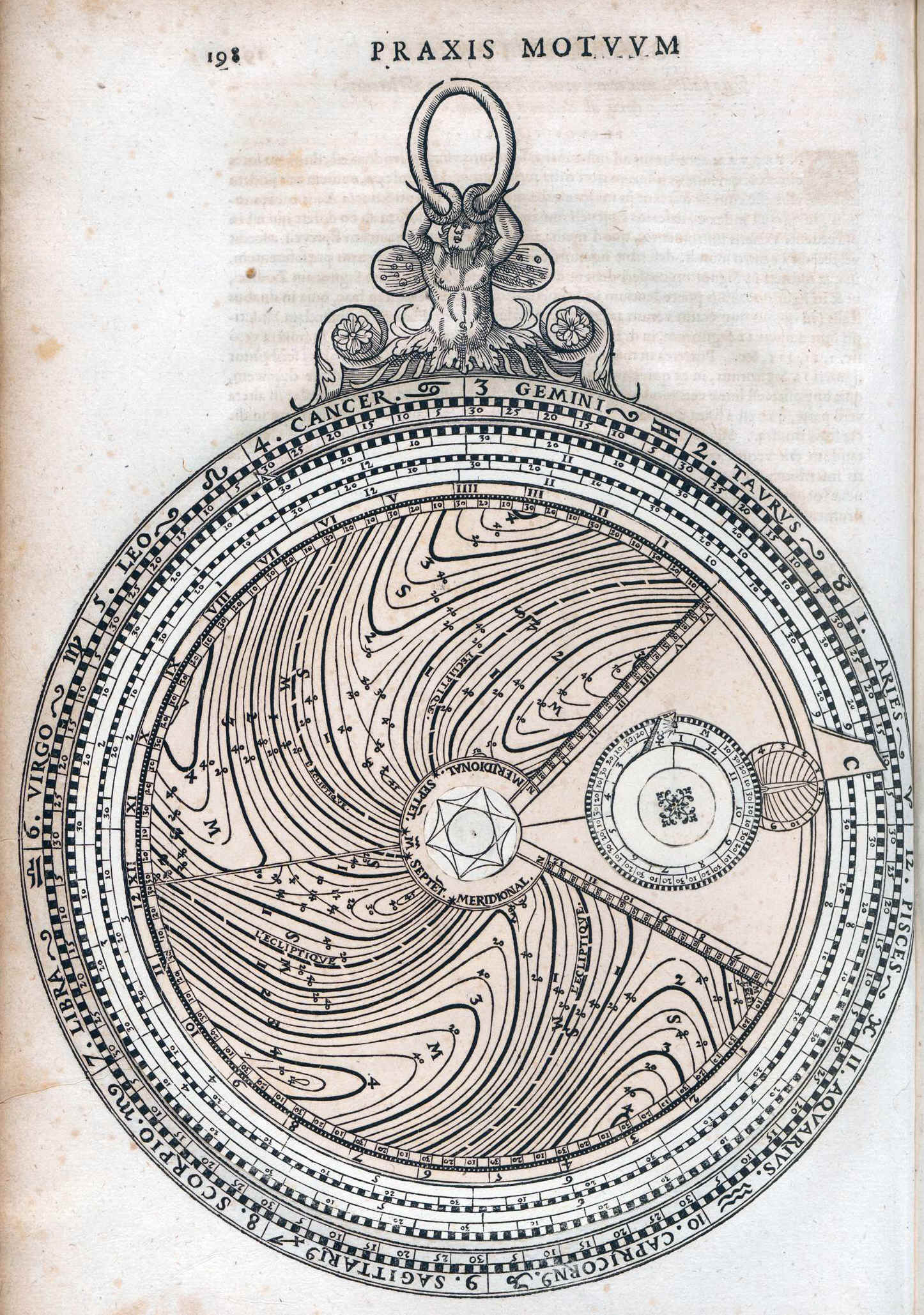
230 [ Disque mobile pour trouver la date et l'heure de conjonction ou d'opposition du soleil à la lune ]
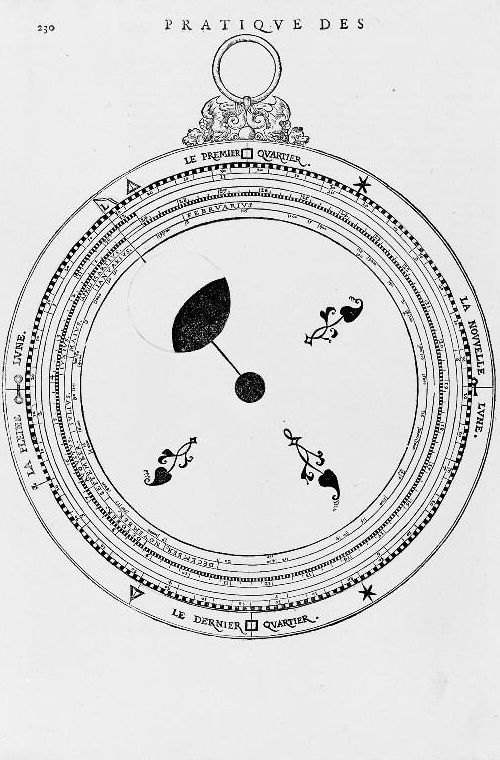
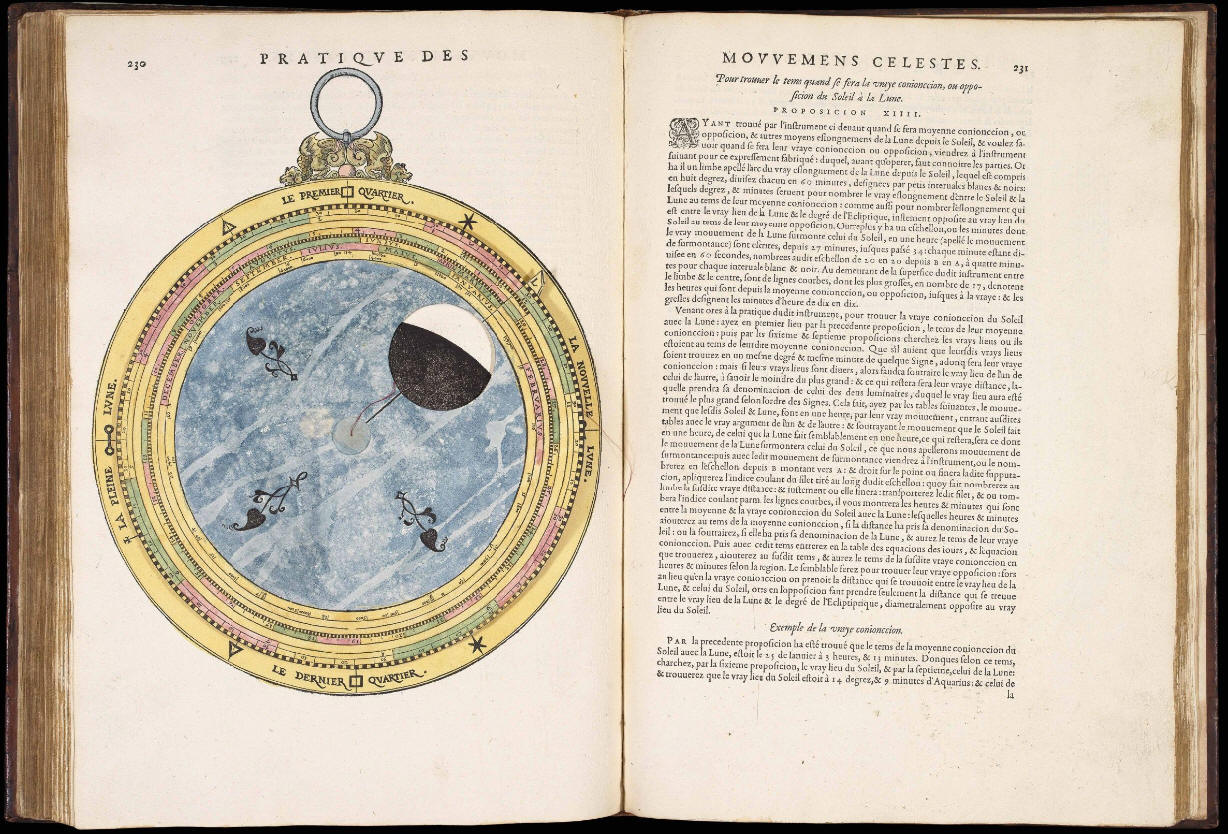
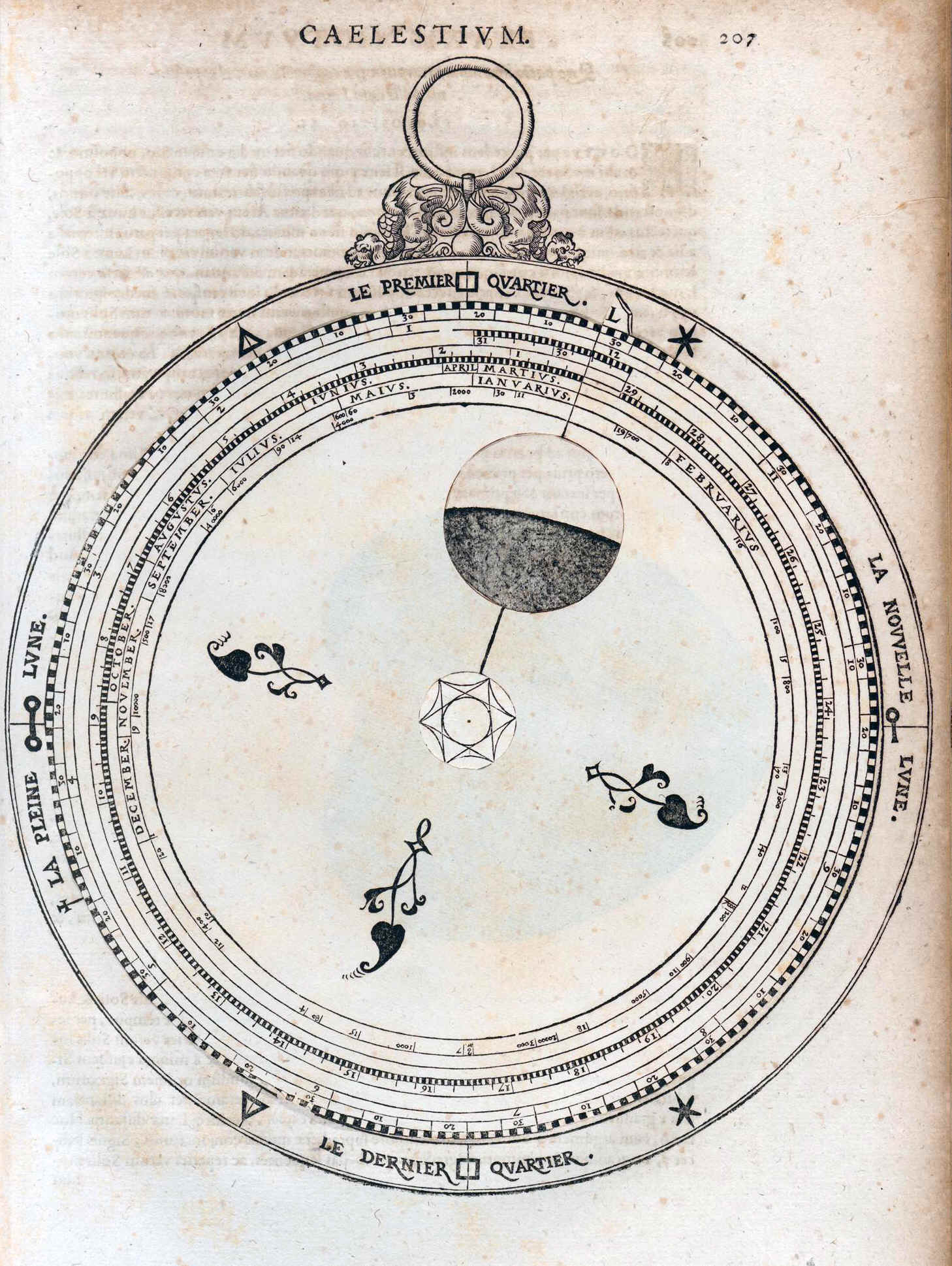
234 [ Disque mobile pour trouver la date et l'heure de conjonction ou d'opposition du soleil à la lune ]
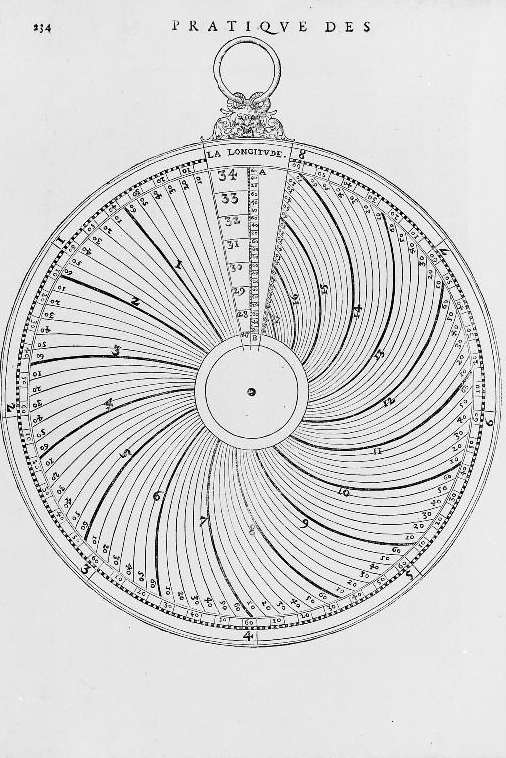
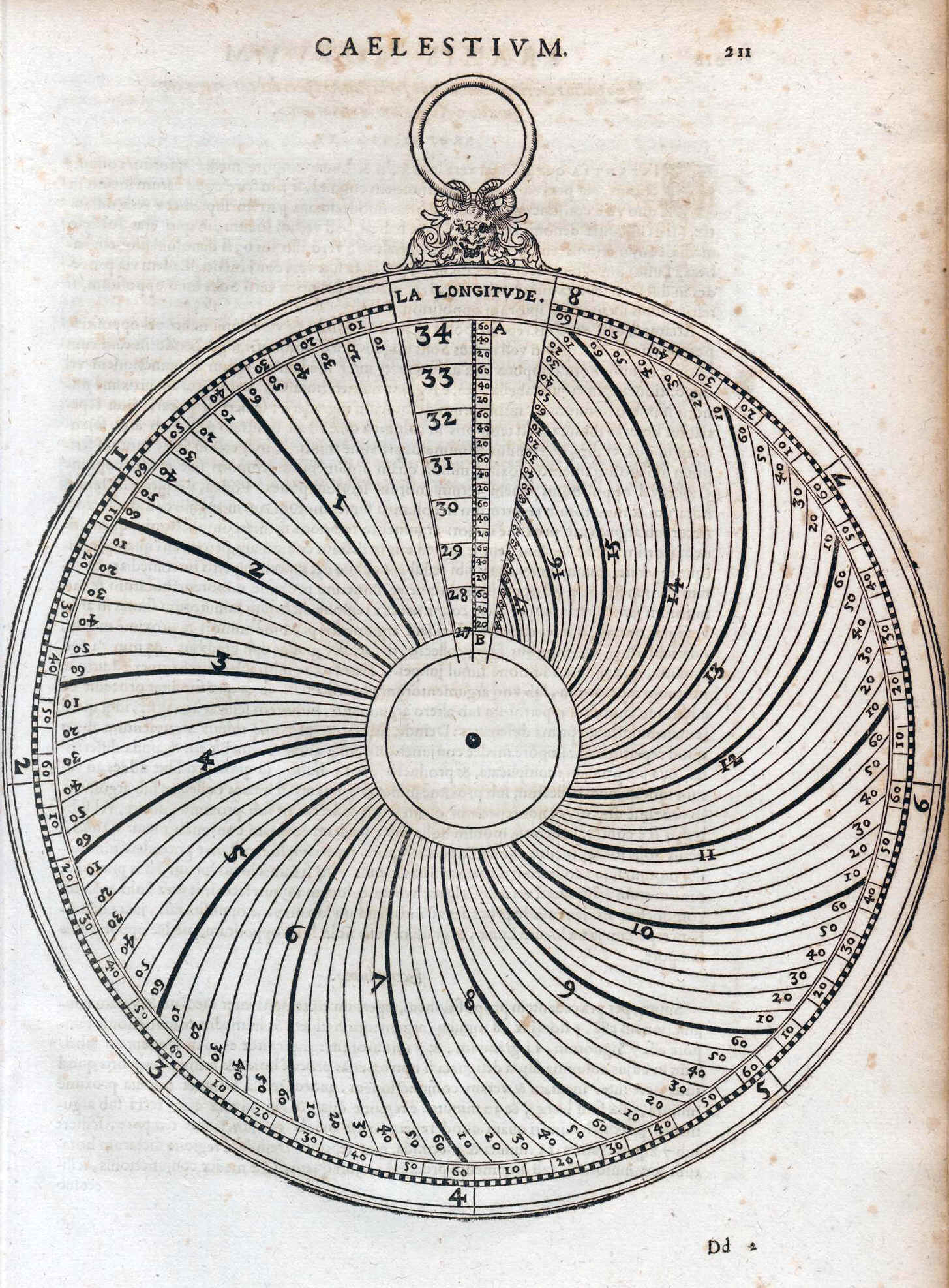
242 [ Disque mobile pour trouver la latitude de la lune depuis l'écliptique ]
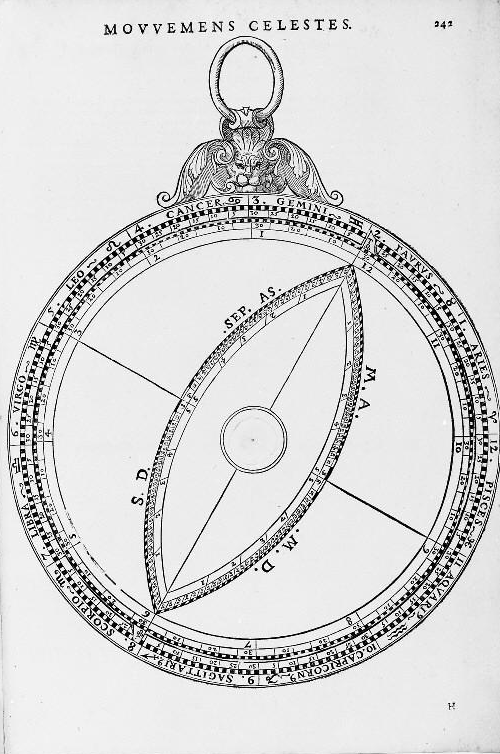
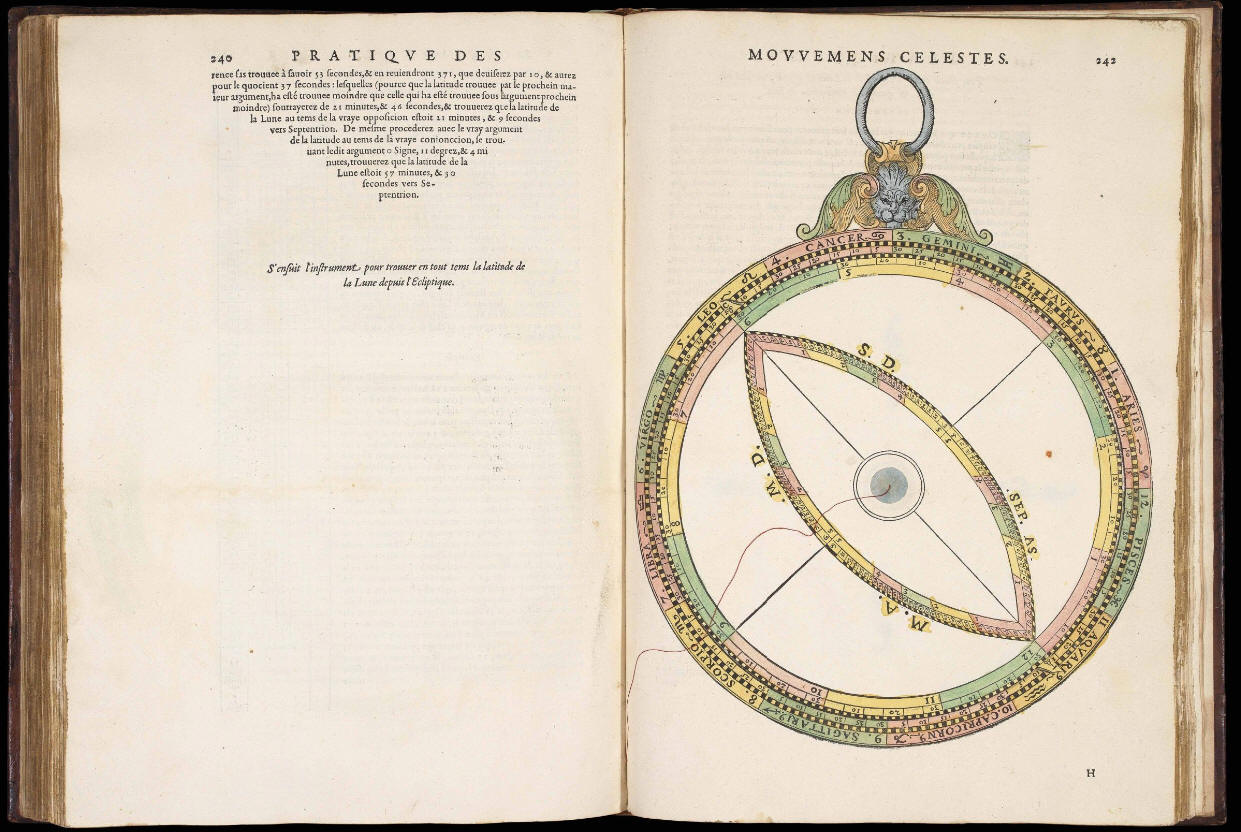
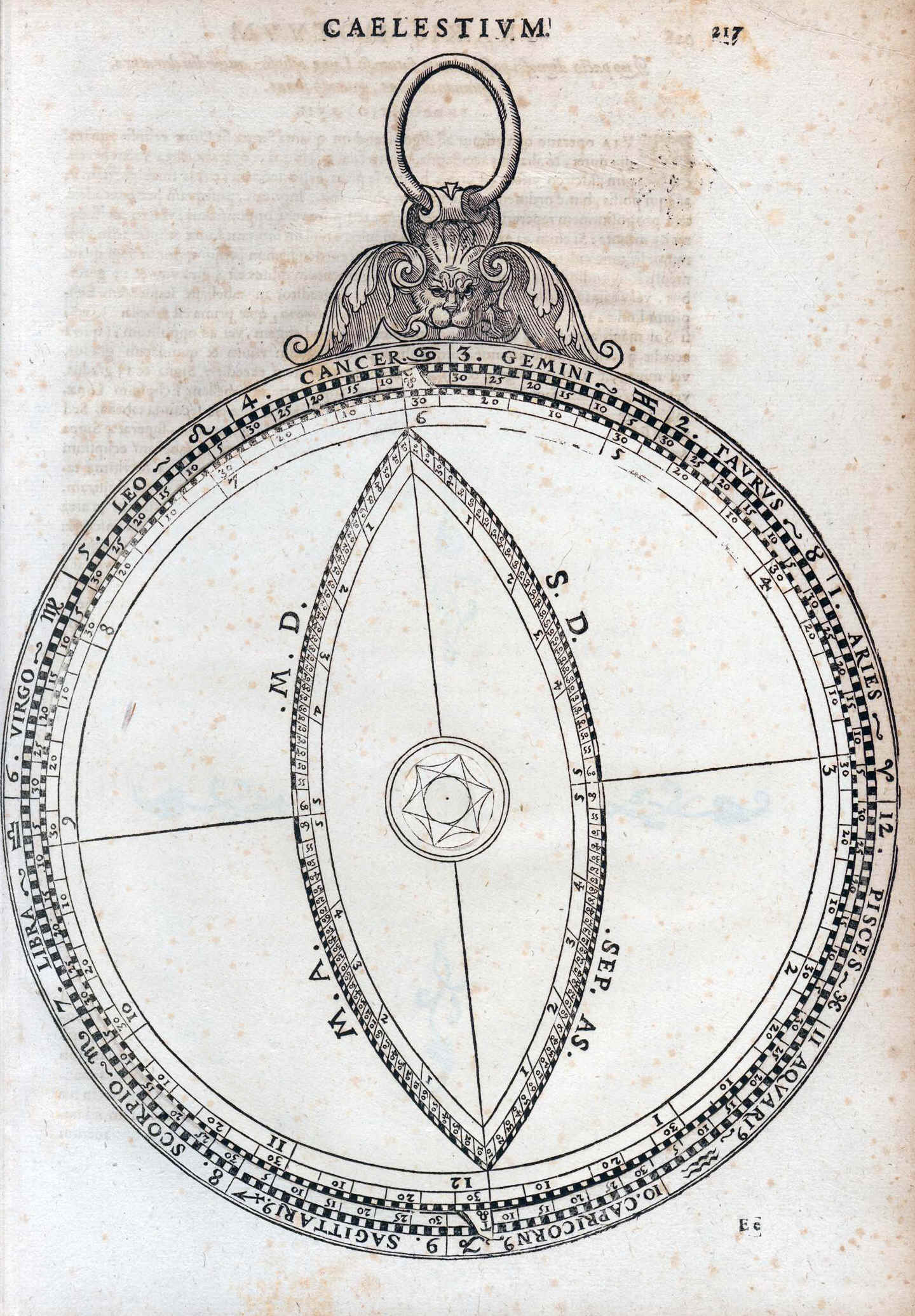
278 [ Disque mobile pour trouver les positions des planètes et de la lune ]
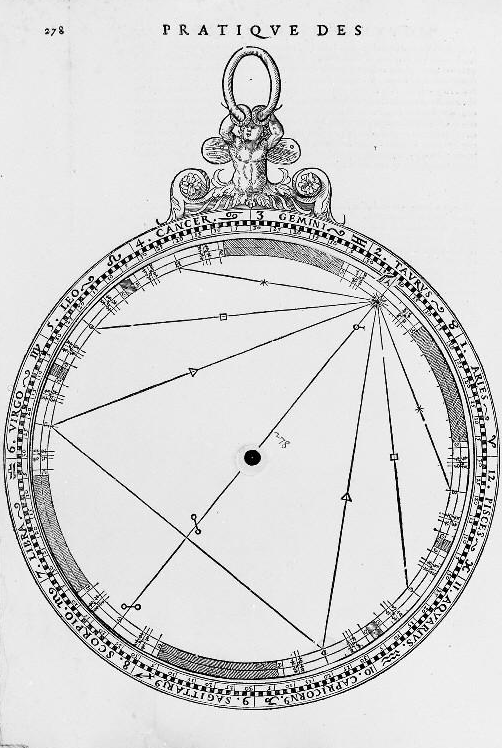
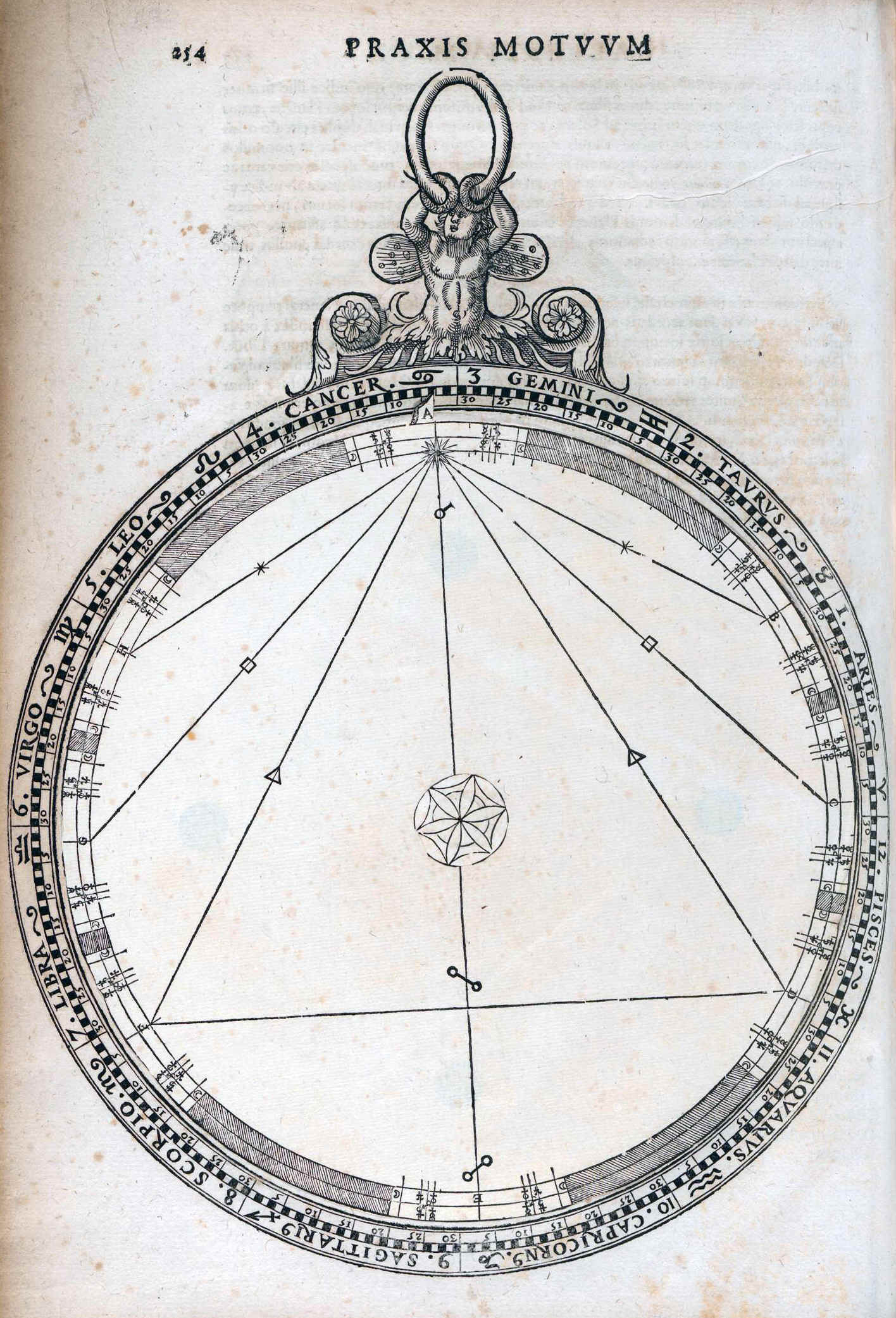
280 [ Disque mobile pour trouver les positions des planètes et de la lune ]
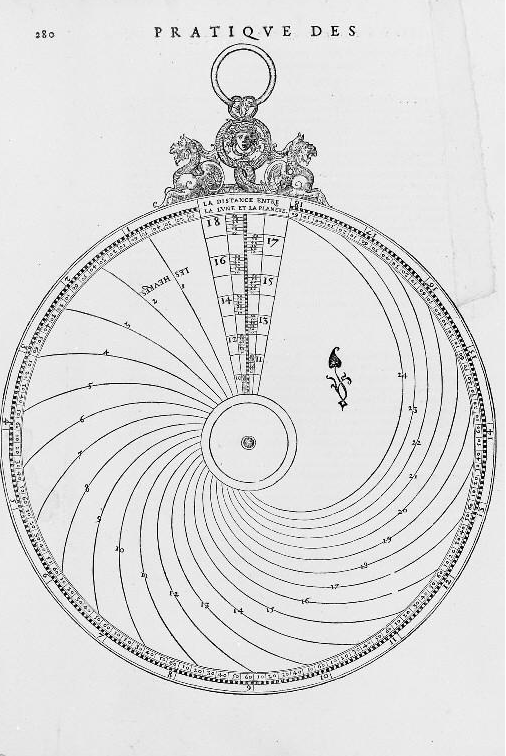
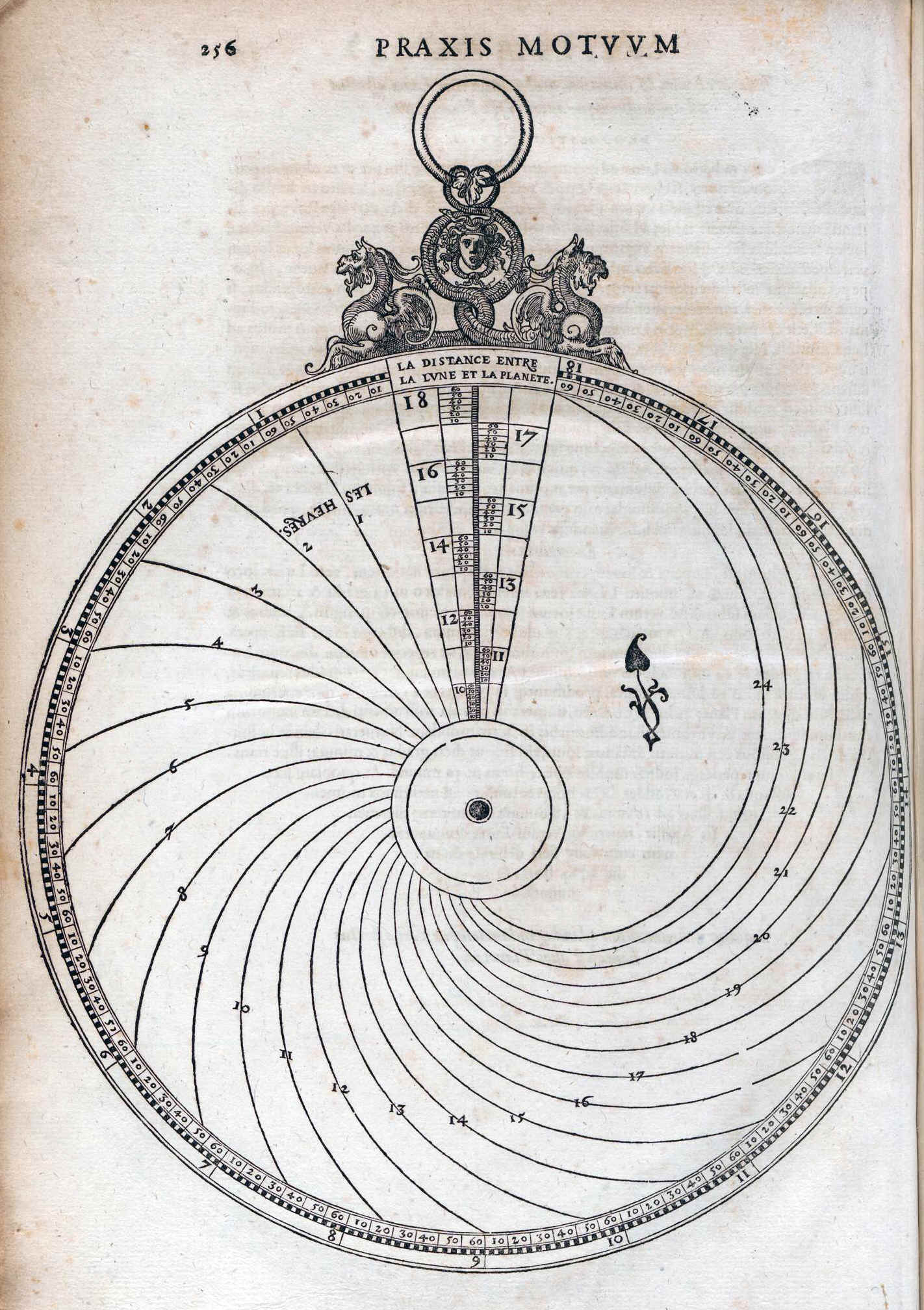
282 [ Disque mobile pour trouver les positions des planètes ]
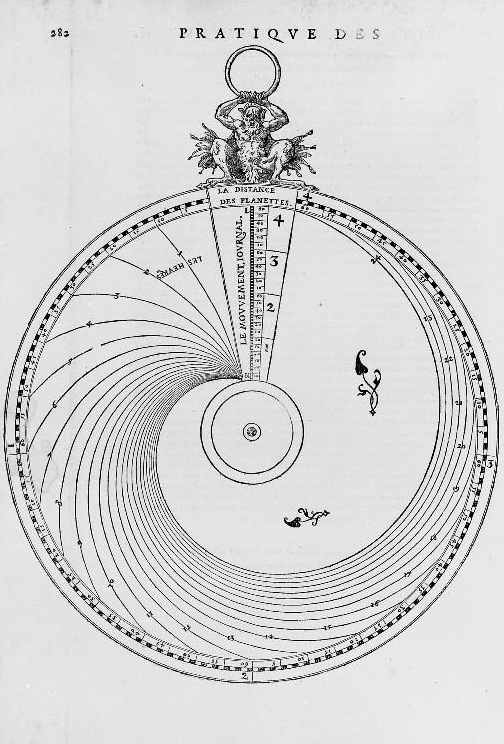
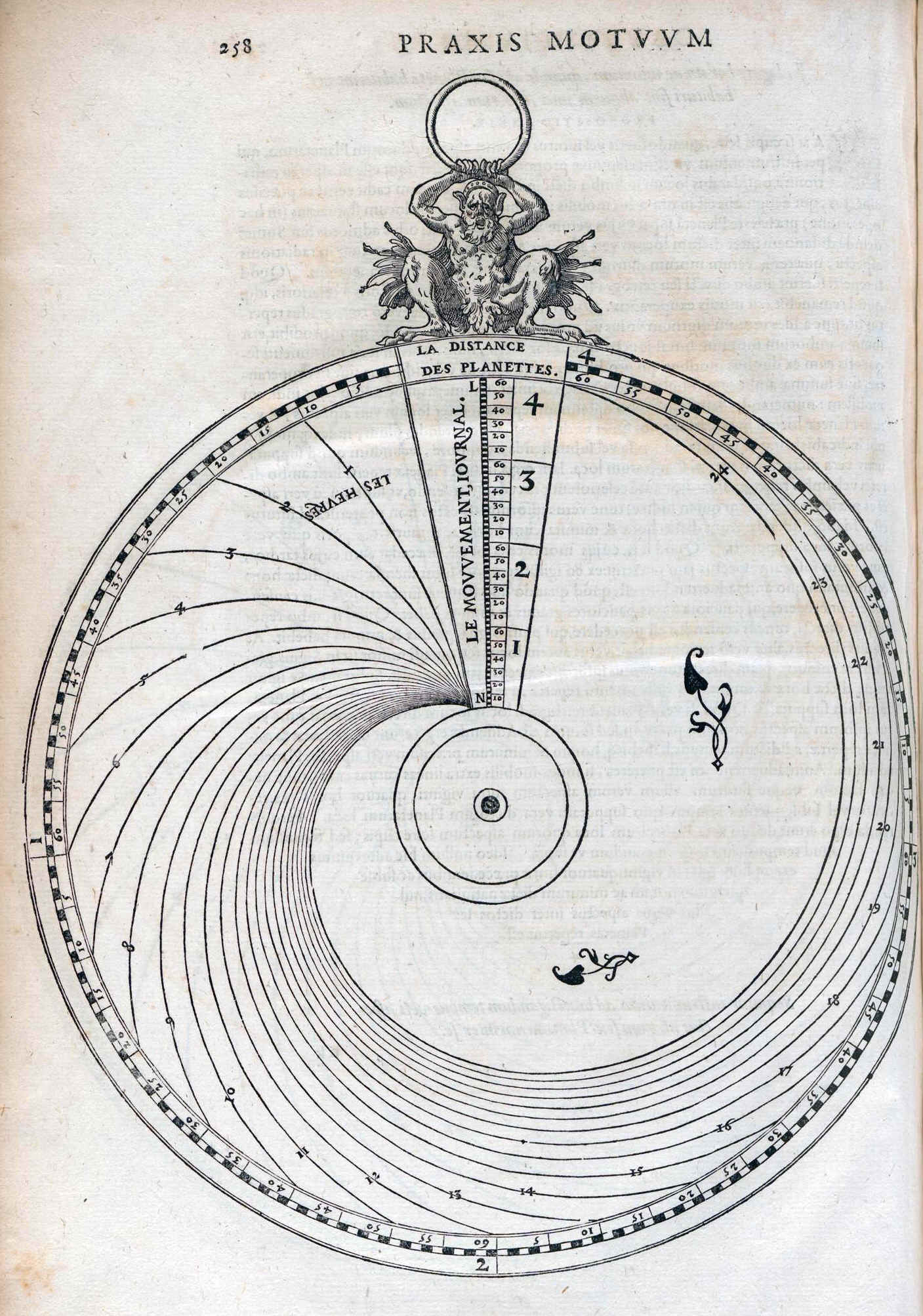
286 [ Disque permettant le calcul de l'occultation des planètes ]
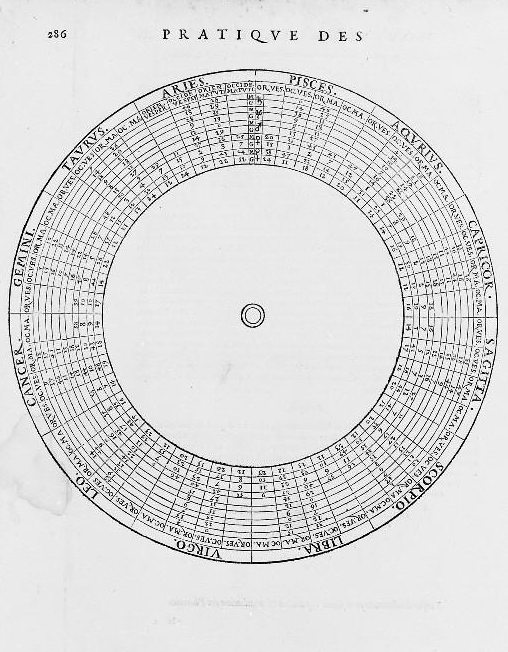
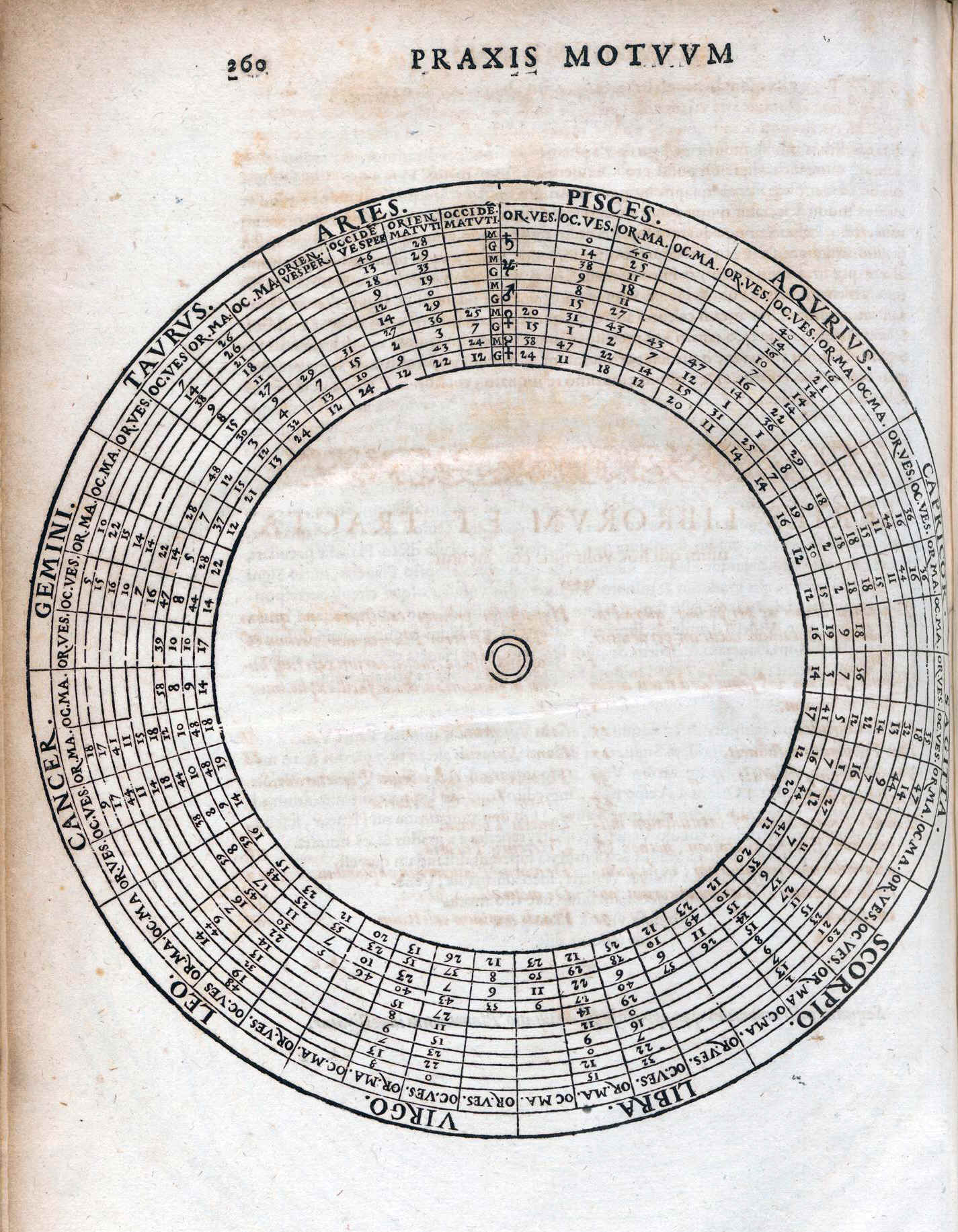
L’eredità
di
Per cortesia di

esamina
nella seguenti pagine le influenze delle tavole del Dürer sulla produzione
cartografica celeste
Von
Dürer beeinflusste Himmelskarten
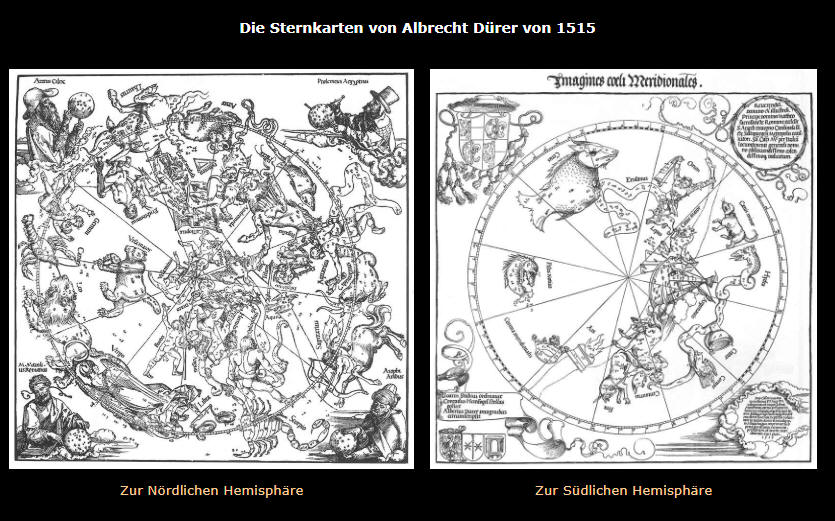
https://www.astronomie-nuernberg.de/index.php?category=duerer&page=1515
https://www.astronomie-nuernberg.de/index.php?category=duerer&page=nachfolger
di FELICE STOPPA
LUGLIO 2014